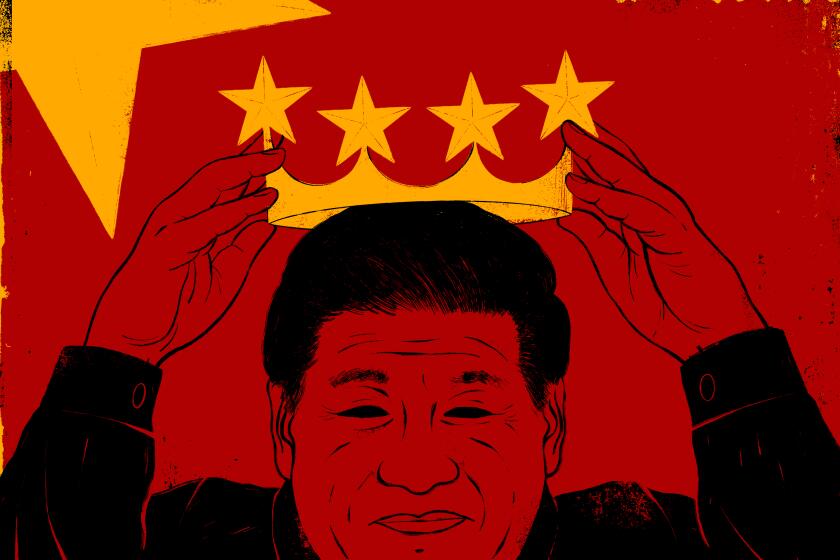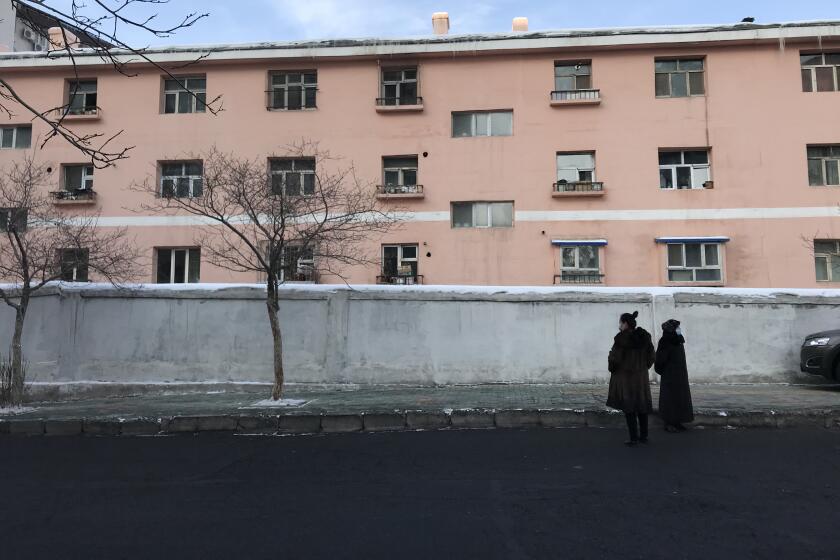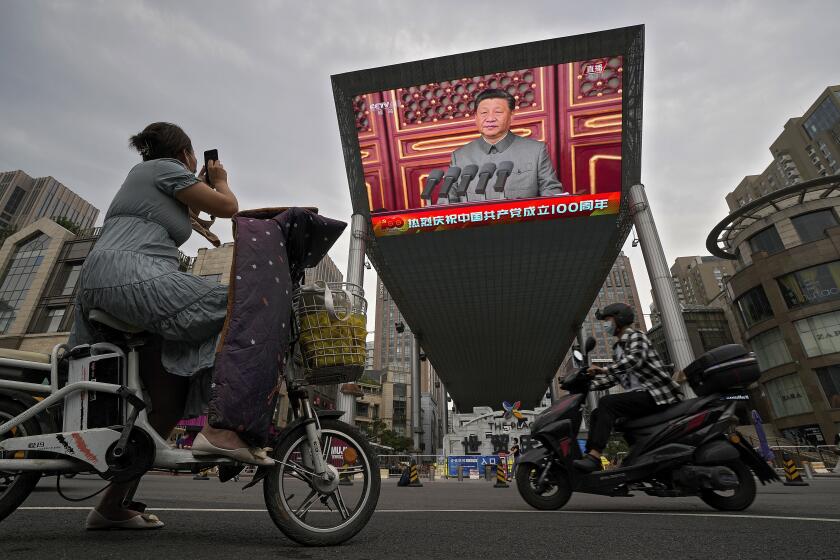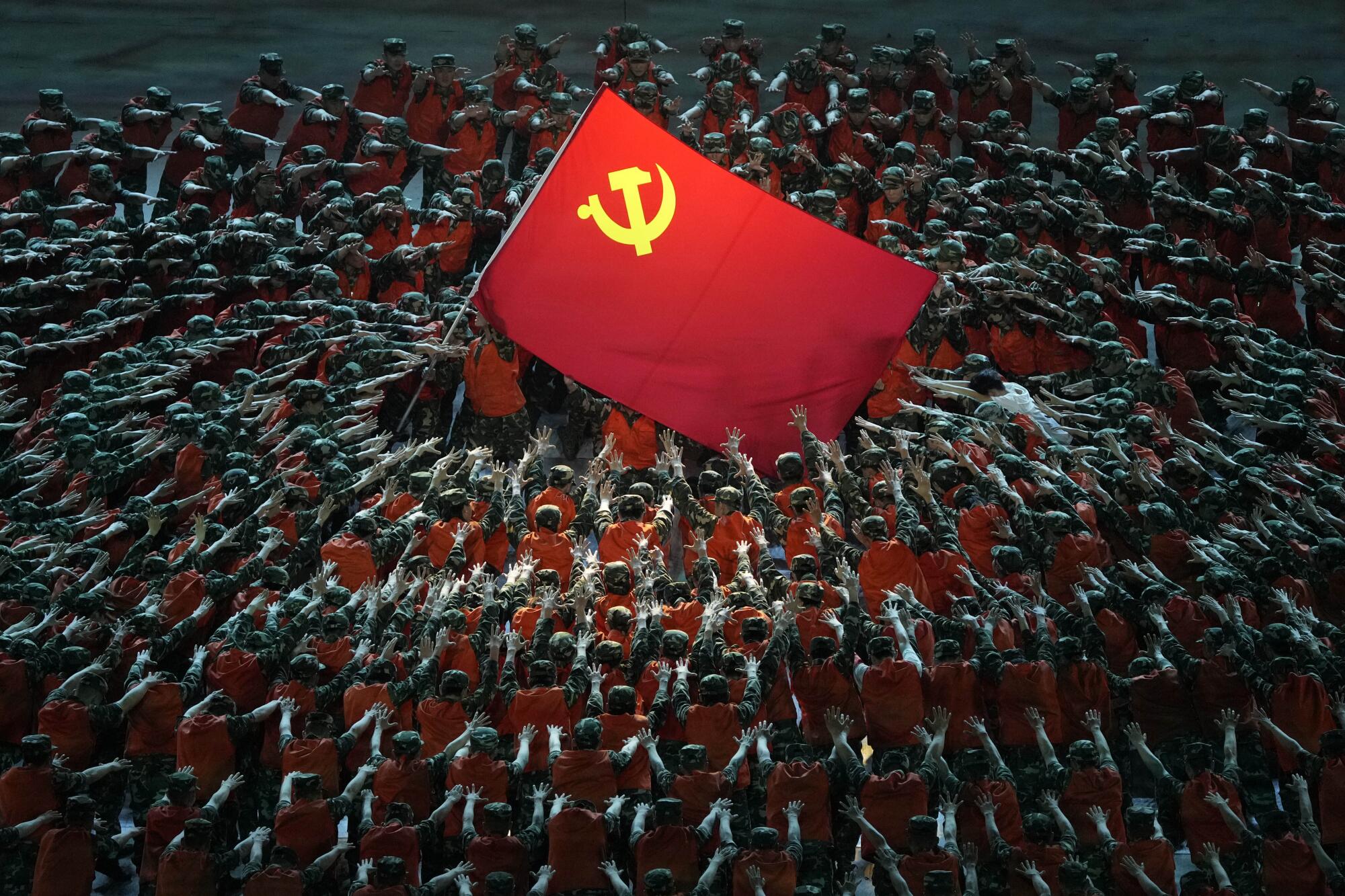
- Share via
BEIJING — It was just past dawn, the sun casting a pink glow over Tiananmen Square, as I headed to Beijing West railway station.
The square had been closed to the public for weeks as Chinese authorities prepared for the Communist Party’s 100th anniversary celebration on July 1. Chinese President and party Secretary-General Xi Jinping had spoken triumphantly in the square, pumping his fist and rhapsodizing about how China had become rich and strong under the party’s leadership.
Like all foreign reporters in Beijing, I’d covered the lead-up to the celebrations: Authorities clamped down on critical speech while rolling out a nationwide campaign that whitewashed party history. They promoted “red tourism,” organizing media trips to revolutionary sites that once hosted party founders and the Red Army. Chinese tourists flocked to those same sites, often donning nostalgic military uniforms, singing revolutionary songs and recording themselves renewing their party vows.
I had visited many of those sites before. Last year at party revolutionary Mao Zedong’s early base in Yanan, a local man named Liu Zhijun, 67, lowered his voice when he heard I was a foreign reporter.
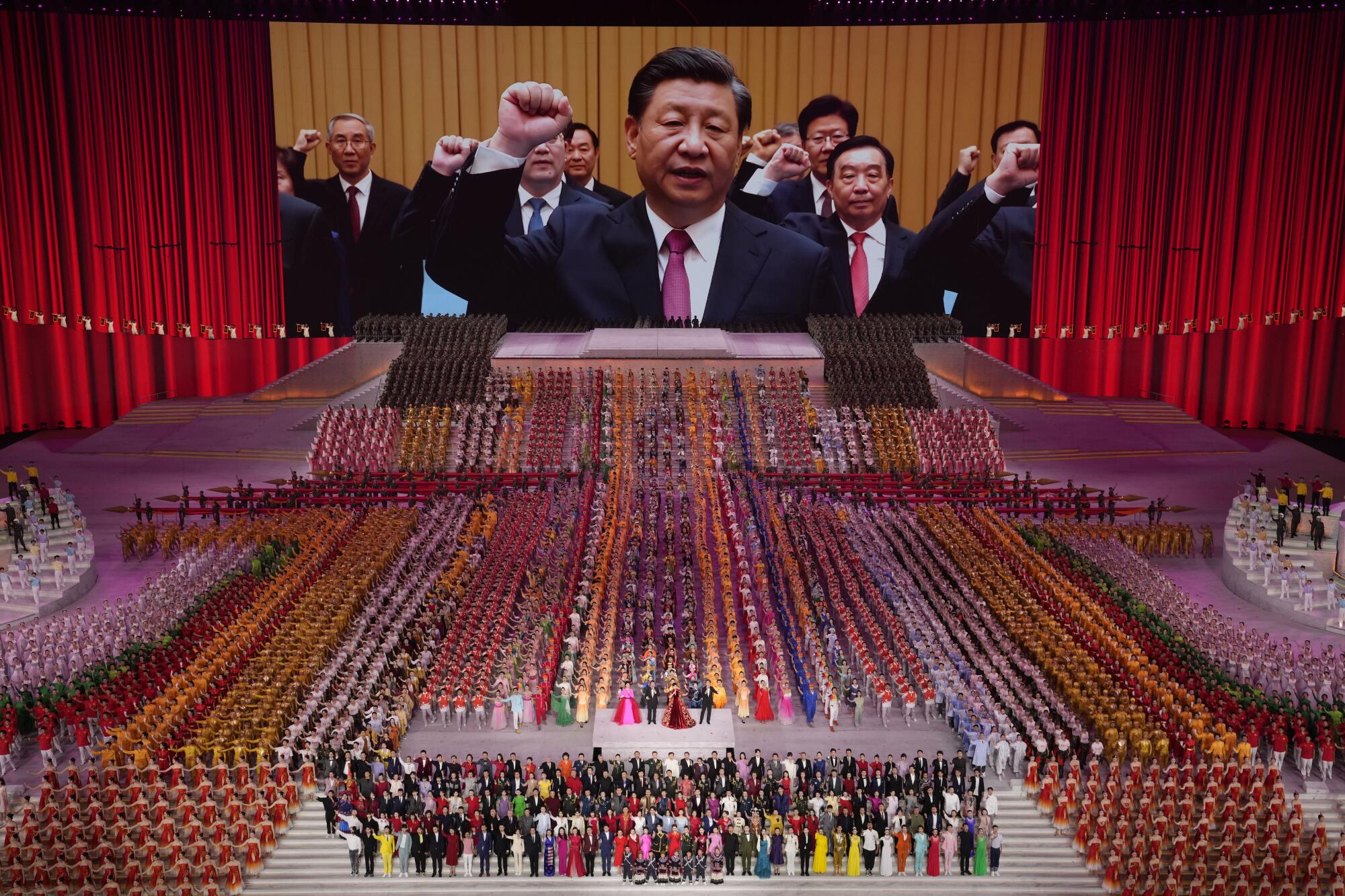
“The information they exhibit is different at different times,” he murmured. China’s shifting narrative could render someone a beloved hero one day and a counterrevolutionary the next, he said: “It’s always changing, all the time.”
I wondered about Liu’s words while watching Xi’s speech. Behind the censorship and propaganda, what was changing about the party’s hundred-year story? Which parts were being erased, which parts elevated or retold? What of the purges, power struggles and vanishings? There was no denying China’s astounding rise as a world power— but at what cost?
A few days after Xi’s speech, I set off with a photographer and researcher on a journey across China to try to answer such questions. We traveled more than 4,300 miles — roughly four times the length of California from north to south — through inland provinces, deep into northwestern deserts, across the Tibetan plateau, into forgotten villages and back out to the glamorous megalopolises of China’s eastern coast.
We found that the past was not so deeply buried after all.
It spoke to us at every stop.
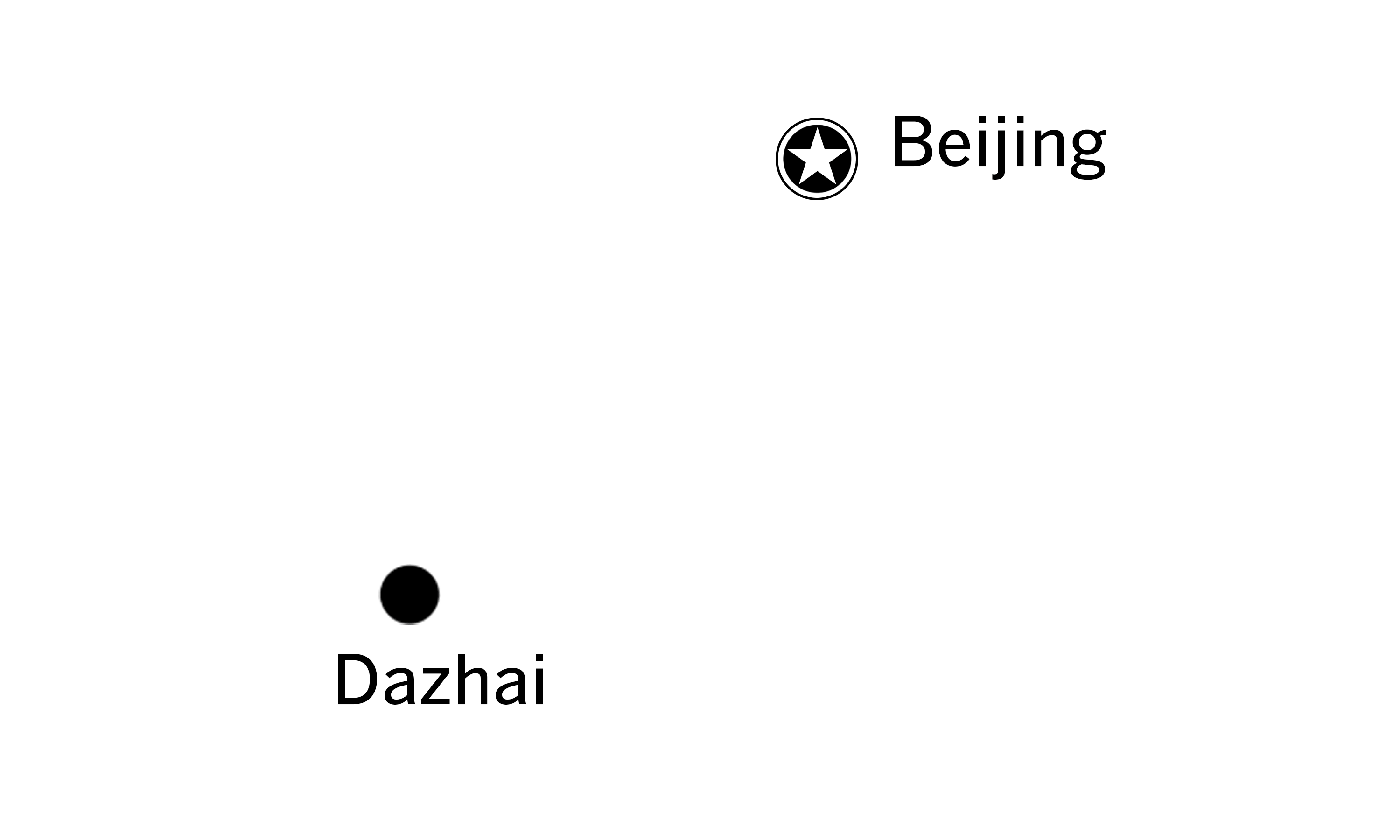
DAZHAI, Shanxi Province
A row of red flags flew above the village entrance, its gate framed by two slogans printed in bright red on a white background: “Zili gengsheng” — self-reliance — on the left, and on the right, “Fenfa tuqiang” — hard struggle.
The slogans dated to 1963, when Mao declared Dazhai a model people’s commune. China was then only two years out from Mao’s catastrophic “Great Leap Forward,” a five-year plan to surpass industrialized Western nations through mass mobilization and collective agriculture. It was a failure. More than 30 million people starved to death even as China kept exporting grain, determined to front a successful image.
The Great Leap was abandoned. Yet Mao allowed no reflection on the errors that caused it, including fabricated harvest numbers. He called for the masses to “learn from Dazhai in agriculture,” falsely claiming its villagers had achieved miraculous crop yields. Only after Mao died and Deng Xiaoping took over in the late 1970s was the Dazhai legend refuted.
In Xi Jinping’s era, Dazhai’s star has risen once again, but past slogans have been twisted to fit a new leader’s vision. “Self-reliance” has become a popular theme in China’s move toward technological self-sufficiency. “Hard struggle” features prominently in official rhetoric about resisting foreign forces that would sabotage China’s rise. Dazhai has become a symbol not for a classless society, but for a strong and wealthy China that will soon surpass the West.
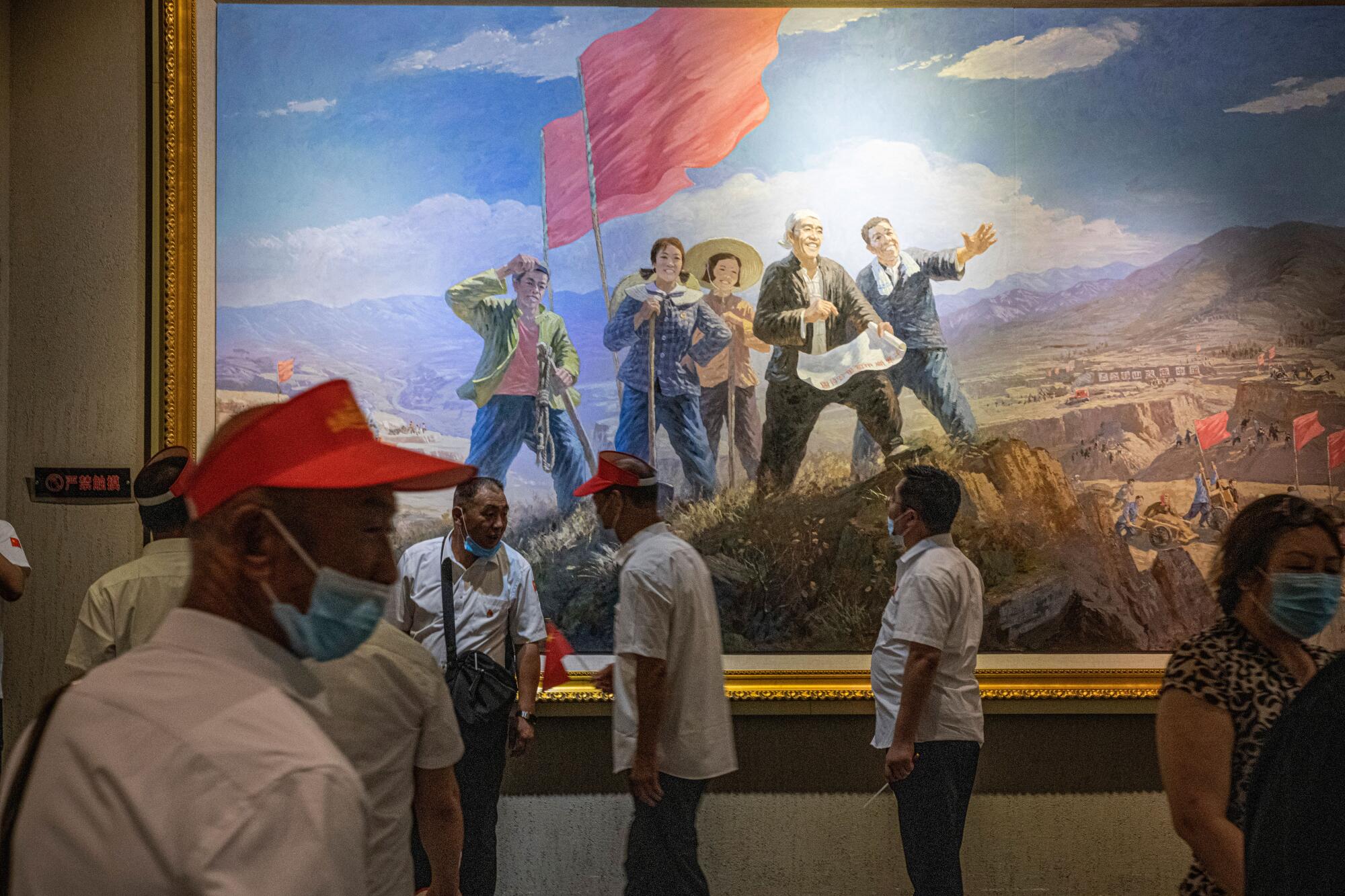
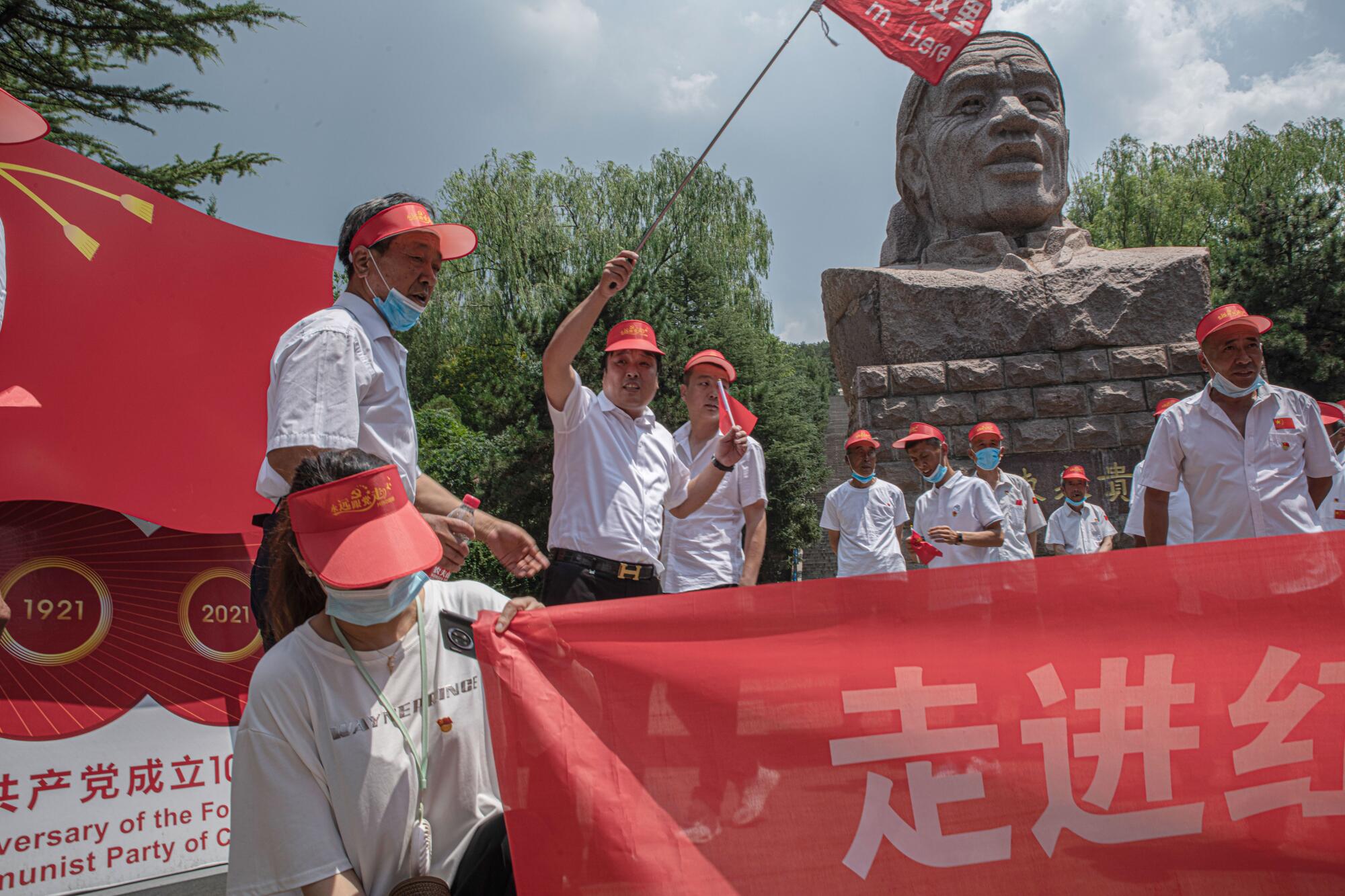
Busloads of party members from surrounding villages visited a museum on a hill dedicated to the Dazhai spirit. They lined up in front of a giant bust of Chen Yonggui, the village’s former party secretary, and recorded videos of themselves singing: “Without the Communist Party, there would be no new China!”
Before Xi’s ascent to power in 2012, intellectuals wondered whether he might allow more reflection on the Mao era and its lies and tragedies. His family suffered during the 1966-76 Cultural Revolution, and his father, Xi Zhongxun, was known as a reformer. Instead, the Chinese president has suppressed critical historians and ignited a resurgence of red nostalgia. He speaks of his own Mao-era experiences with an amnesiac affection that many Chinese have embraced.
“It is always meaningful to struggle arduously,” said Lian Dalei, 72, who was visiting Dazhai with his wife. They had been among the “sent-down youth” forced to perform hard labor in rural Sichuan province in the 1960s. Lian’s father was publicly humiliated during the Cultural Revolution. Yet Lian looked back at that era with pride.
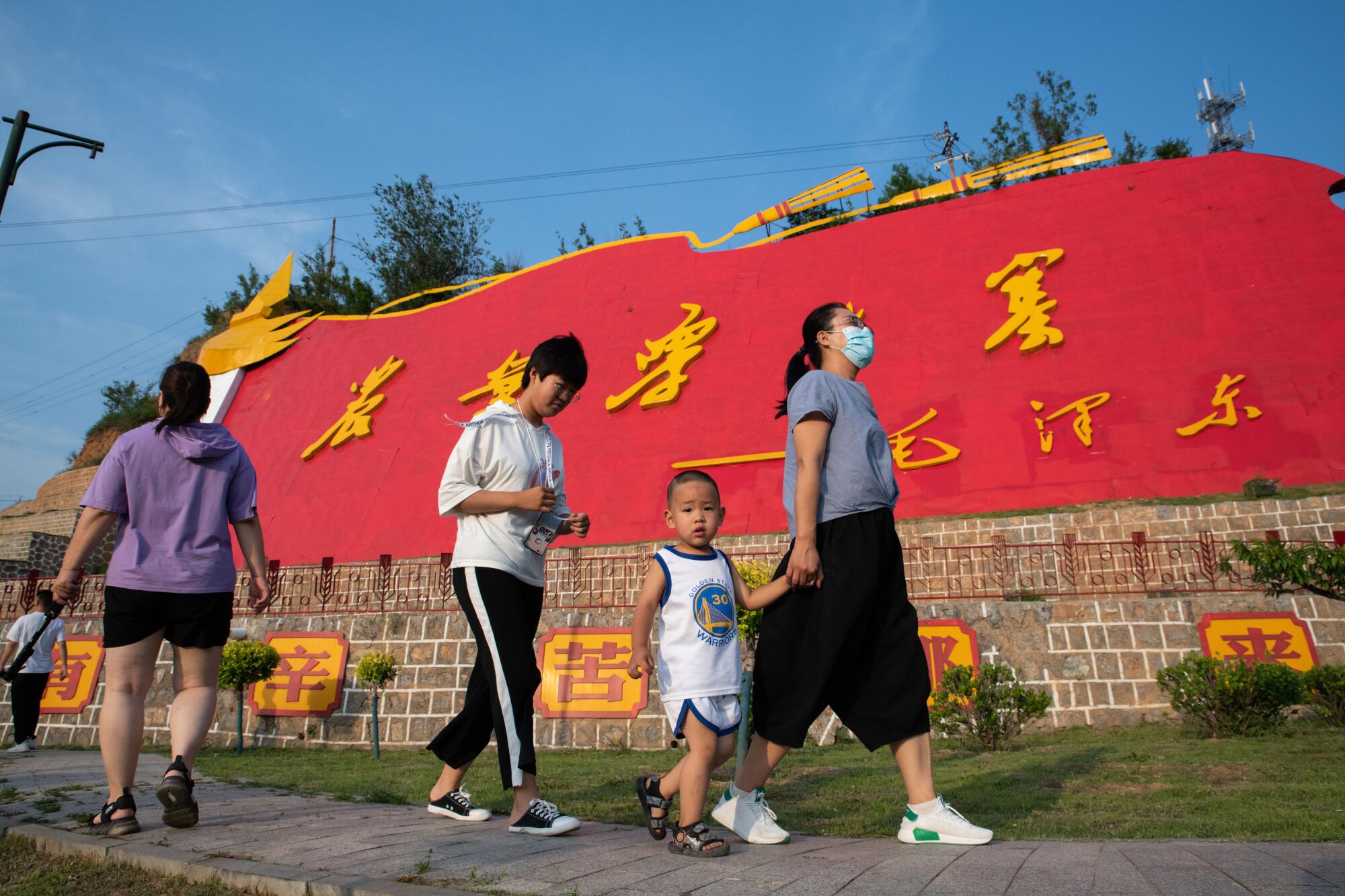
China’s paramount leader, Xi Jinping, sees himself as a savior, anointed to steer the Communist Party and China away from corruption and foreign influence, into a ‘new era’ of prosperity, power and political devotion. Whether his vision matches reality is another question.
“I don’t feel pain at all. I was the highest-performing worker in my county,” he said, recalling how he’d worked from 6 a.m. to 10 p.m. every day, wading through mud with 110-pound loads of grain. He acknowledged that some of his peers criticized the Cultural Revolution and its mistakes. But not him.
Villagers in Dazhai spoke with the same stilted nostalgia.
“Men would go to work before sunrise with empty stomachs. Women would cook and bring food to the fields,” said Li Weirong, 74. Her daughter Jia Suhua, 49, said her mother would also farm, care for the children and join construction crews at night.
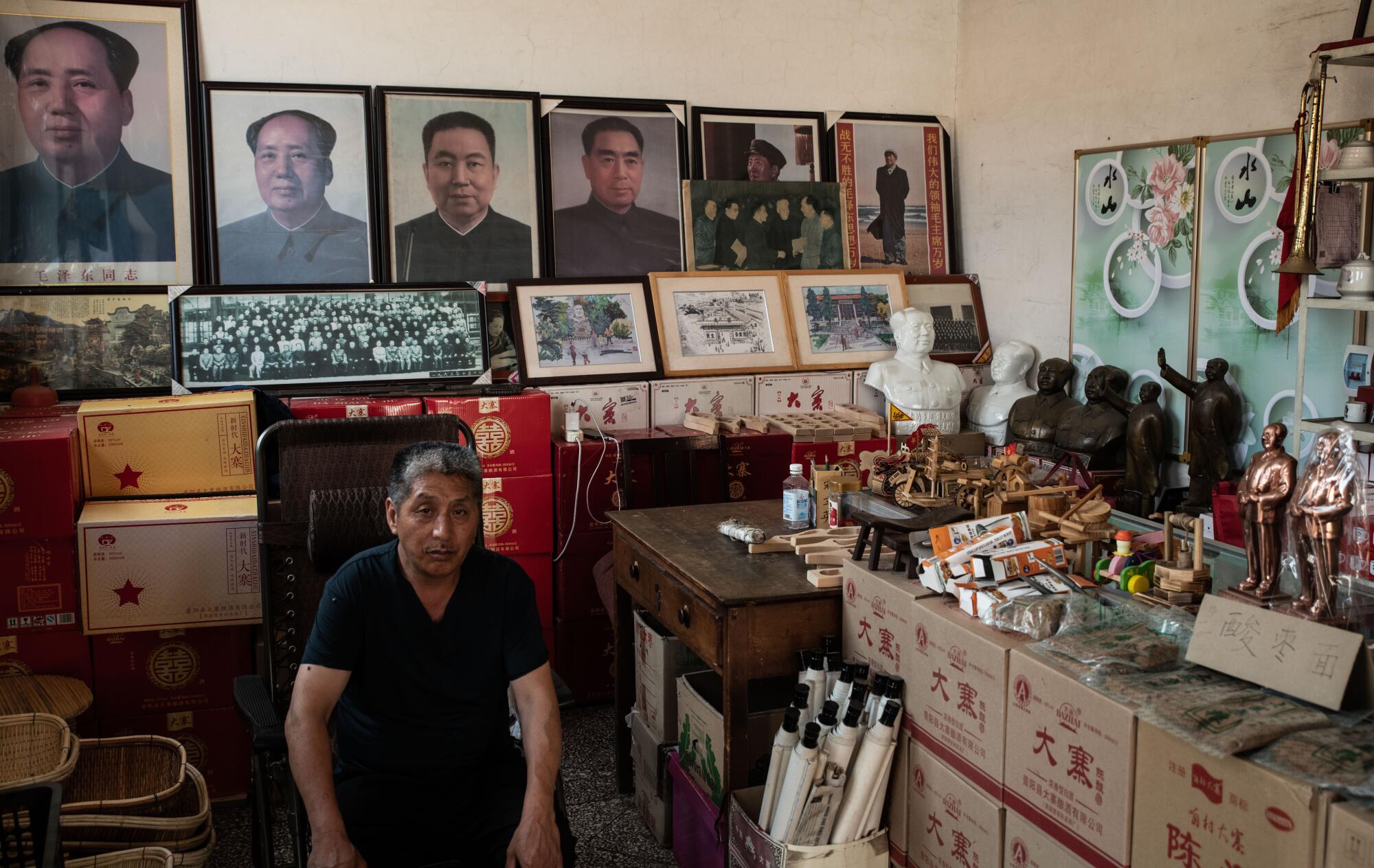
Yet Li remembered that era fondly, Jia said: “They were tired, but they were happy.” They were also happy now, she added. Tourism brought business. Most villagers lived in newer, subsidized apartments through China’s poverty alleviation programs.
Those were the correct ways to speak of the past and present, I thought as we left. They might even represent a majority view in today’s China — or at least what a majority highly aware of the party line would say.
But majorities were not the same as truths.
We traveled six hours west.
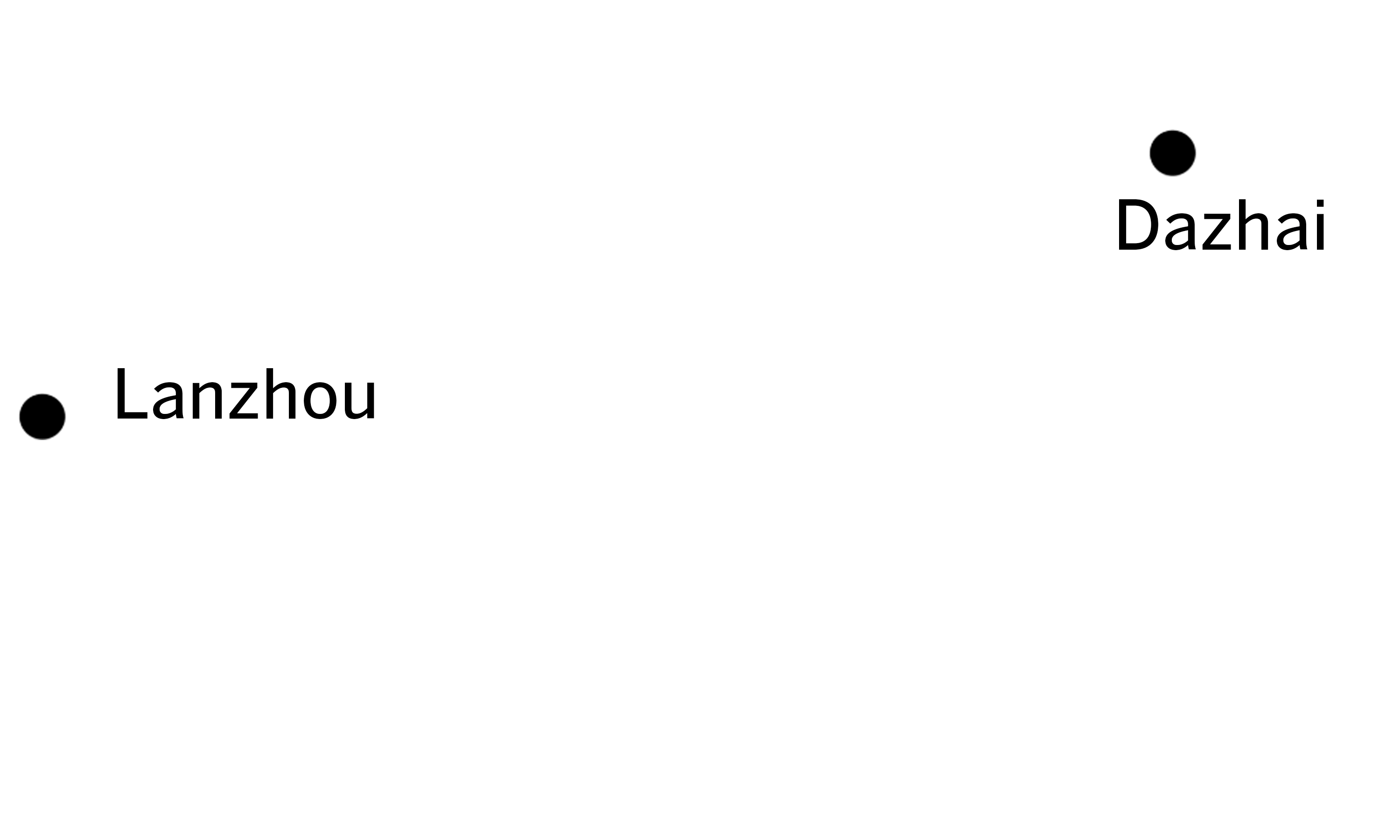
LANZHOU, Gansu Province
The murmur of scripture led me upstairs. I was looking for an old friend, the imam of a mosque here in the capital of Gansu province.
I’d come here before to report on the Hui, a Muslim minority with a long history of survival through adaptation in China. In contrast to the Uyghurs across the provincial border in Xinjiang, who had a geographical homeland and history of independence, the Hui were descendants of Silk Road traders from Central Asia who’d intermarried with Han Chinese.
Five years ago, a Hui imam here surprised me by saying that secularization and corruption, not government suppression, were the largest threats to Hui belief. Local authorities won stability through give-and-take relationships with religious leaders, he said, not through force, which was the government’s strategy with Uyghurs.
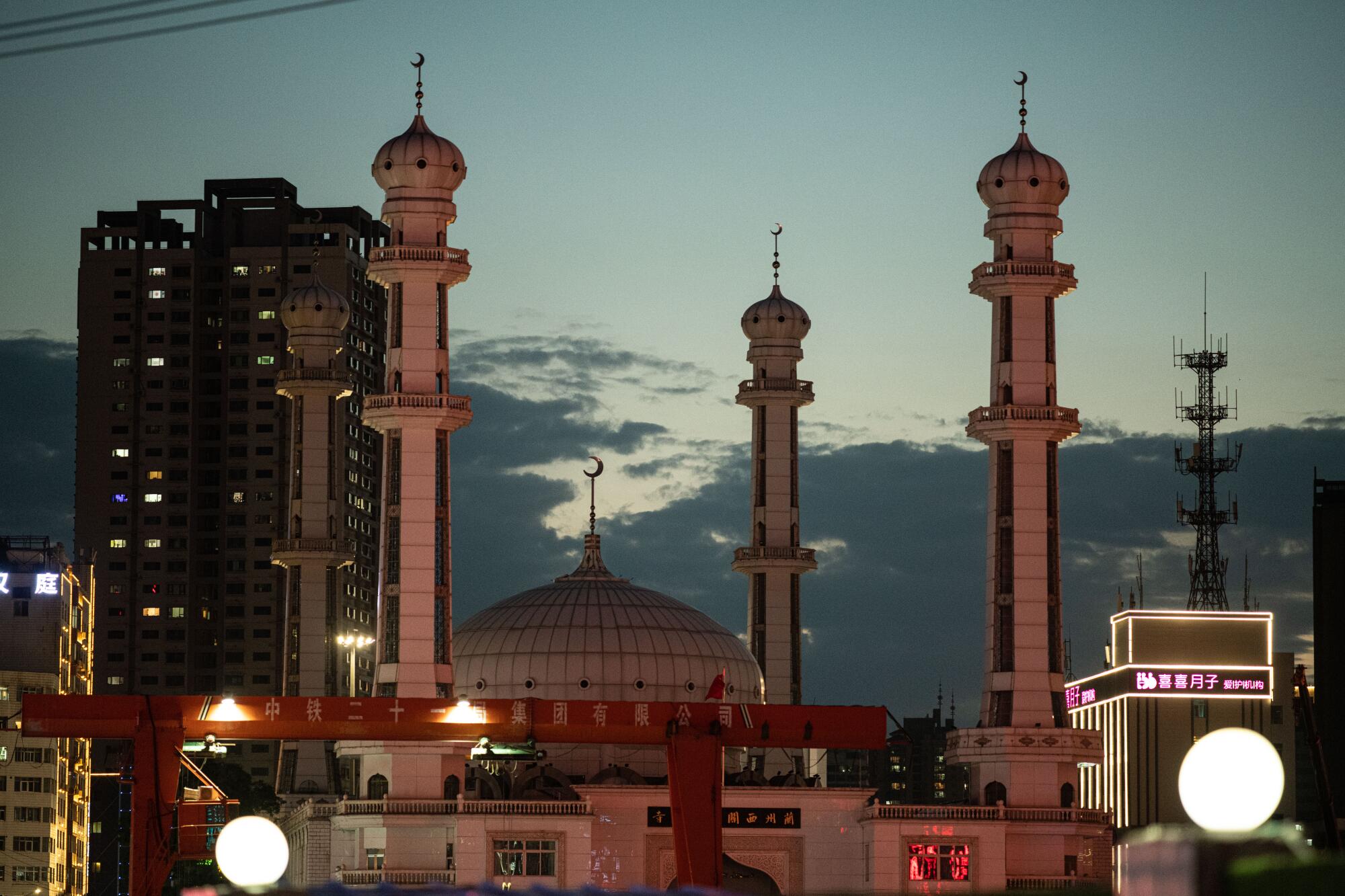
A vast system of Chinese surveillance, detention, cultural erasure and forced labor has devastated the Uighur people in Xinjiang, their homeland.
The party has swung between crackdown and tolerance throughout its history. In the 1960s, Chinese officials killed more than 20,000 Mongols accused of being part of a secret separatist party, only to admit later that the party did not exist. Persecution of minorities subsided somewhat in the 1980s as the party grew more concerned with economic growth than ideology. Minorities could find space for their religion and cultures as long as they did not challenge political authority.
That is changing. Since 2018, an estimated million Uyghurs and other minorities, including some Hui, have been arbitrarily detained in Xinjiang in the name of “counter-terrorism.” Religious and ethnic minorities have been subject to “Sinicization,” a euphemism for assimilating ethnic minorities into Han culture, eliminating foreign influences and turning religion into a tool to ensure obedience to the party.
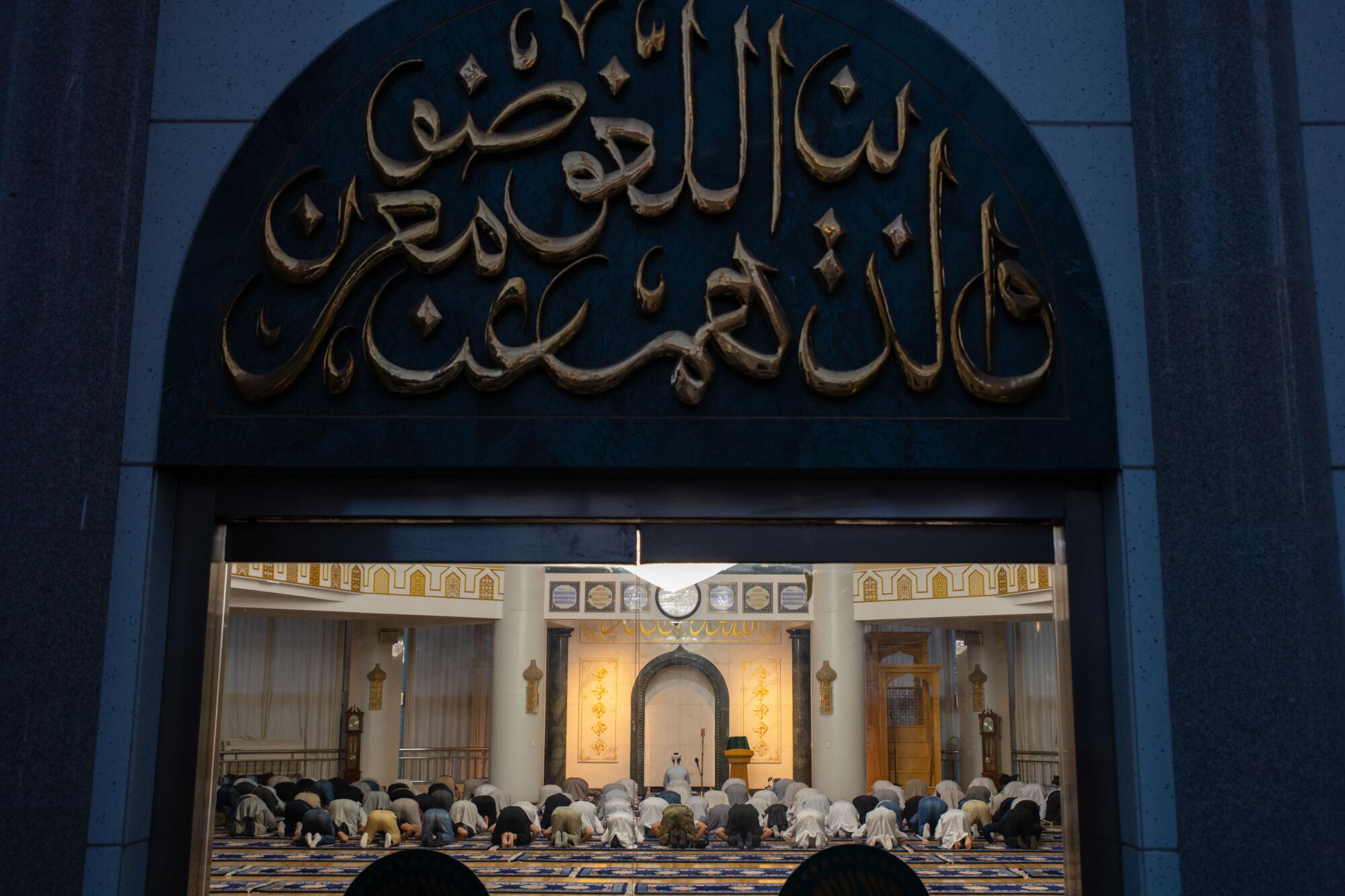
The imam had become afraid.
“We are being controlled directly now,” he said, asking not to be identified for his protection. He had erased most of his foreign contacts on the social media app WeChat, scared of being associated with anyone overseas. On his table sat a notebook with a hammer and sickle and “Study Notes” printed on the cover. As a religious leader, he had to attend regular study meetings “to understand government policies,” he said.
The imam said he had a mother in her 90s and children who still needed to finish school. He apologized for being unable to say more.
“We worry about the future,” he said, his voice catching, and wiped his eyes with a sleeve. “Pray for us.” Soon after I left, he deleted me from WeChat too.
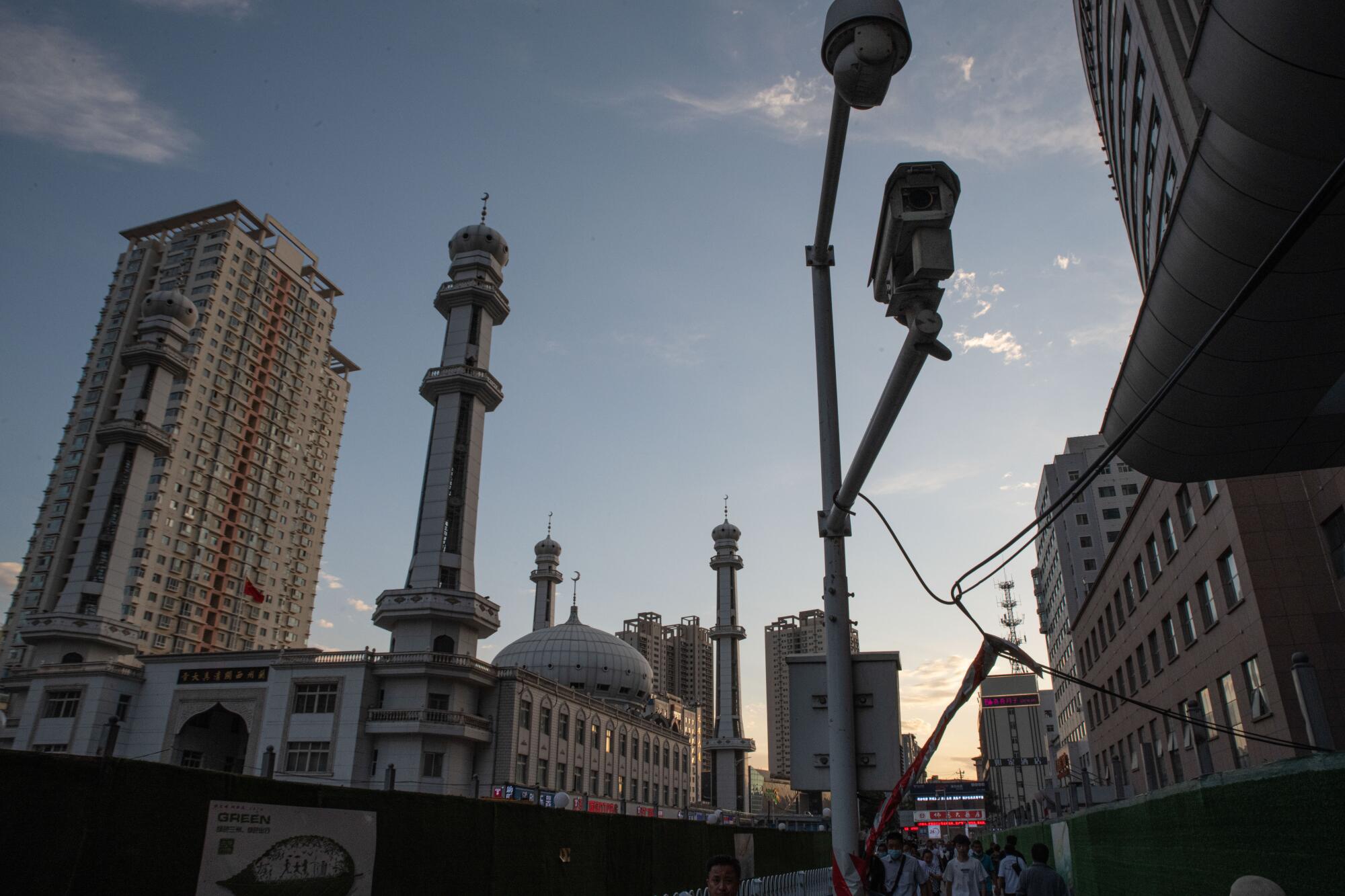
Many of the mosques in Lanzhou had lost their domes and minarets, which had been lopped off and replaced with Chinese-style curving roofs. But there was one, the Xiguan Mosque, that stood intact — though a national flag flew atop its front gate. Red banners calling for ethnic unity plastered its inner walls. Surveillance cameras ringed its perimeter.
In a small upstairs hall, women spread out mats for late afternoon prayers. They knelt and pressed their foreheads to the floor. A young mother in a hijab shushed her toddler son.
When I told her I was a journalist, she came closer, but declined to give her name. Prayer was still allowed here, she said, but fewer people came — partially because of the COVID-19 pandemic, but also because of the “current policies.”
“They want to make us Han,” she said.
I asked how the Hui in Lanzhou felt.
“Full of sorrow,” she said. She picked up her son and left.
Outside, a man dressed in all white with a traditional white skullcap sat on a bench. His name was Ma Ruisheng, 50, a Lanzhou native who laughed when I asked whether he thought the mosque’s dome would be removed like the others.
He beckoned me to come through the gate, then pointed at a carving above the mosque’s entrance. It depicted an older, Chinese-style building. That was how this mosque looked before it was destroyed in the Cultural Revolution, he said. It was rebuilt in 1983 with more distinct Islamic features. But these days, the party sees all foreign influence as sinister. The Hui could only adapt to its wishes.
“If we don’t walk with the party, we will not survive,” Ma said.
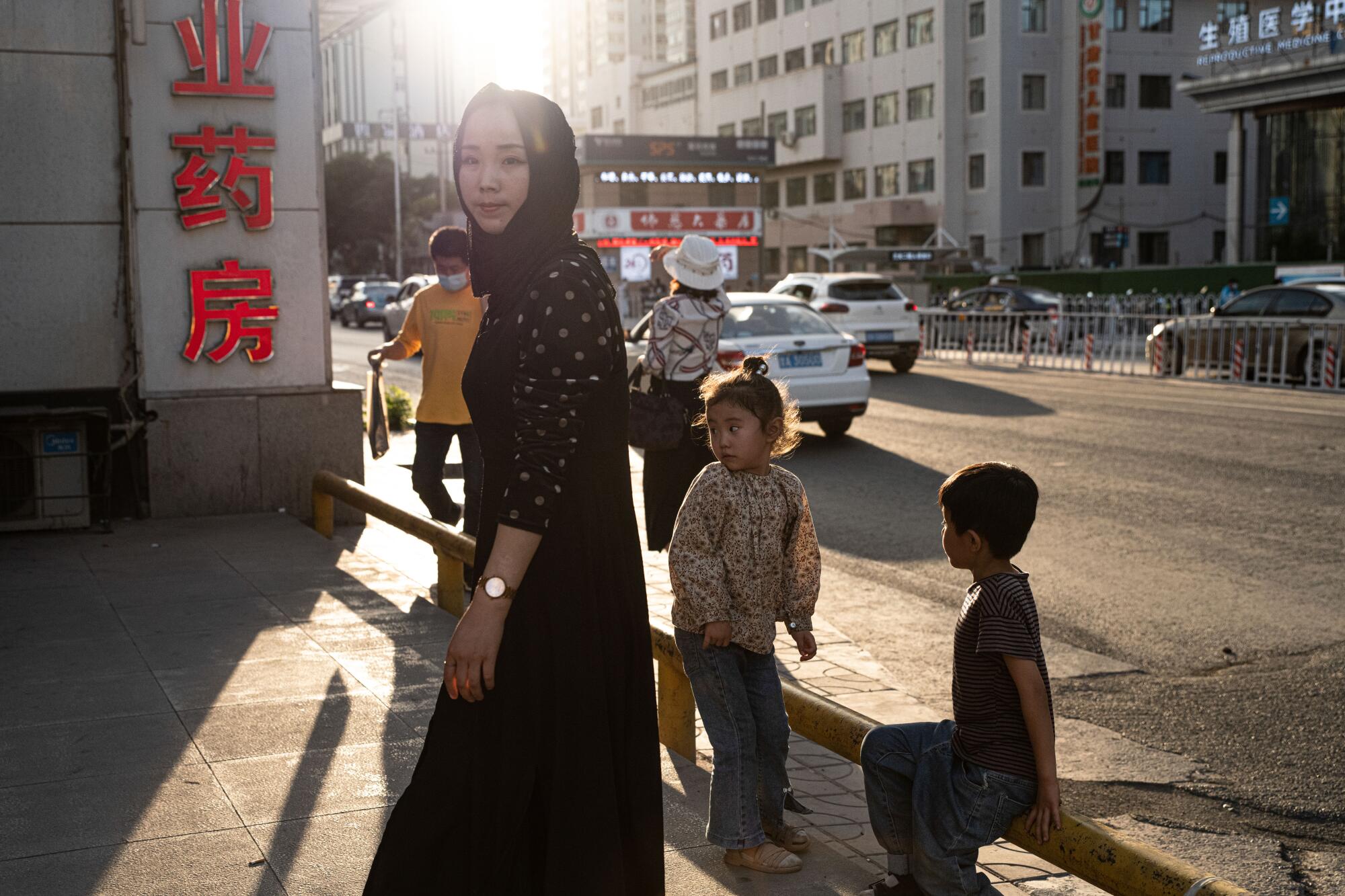
In a small shop near the mosque, an elderly man selling prayer beads and head scarves said: “This is a testing time for Muslims.” The shopkeeper, who for several years had been forbidden to sell Qurans or religious texts, added in a low voice, “We are all afraid.”
He looked at my recorder and my colleague’s camera. “You know what they can do. They can destroy us.”
I erased the recording and promised to not identify him. Many interviews in China end this way. Words vanishing as if written on water. The shopkeeper went into the mosque to pray. The call to prayer was still allowed, but at a muted level audible only within the courtyard.
Outside, the streets buzzed with bright lights and busy traffic. The mosque sat silent in the dark.
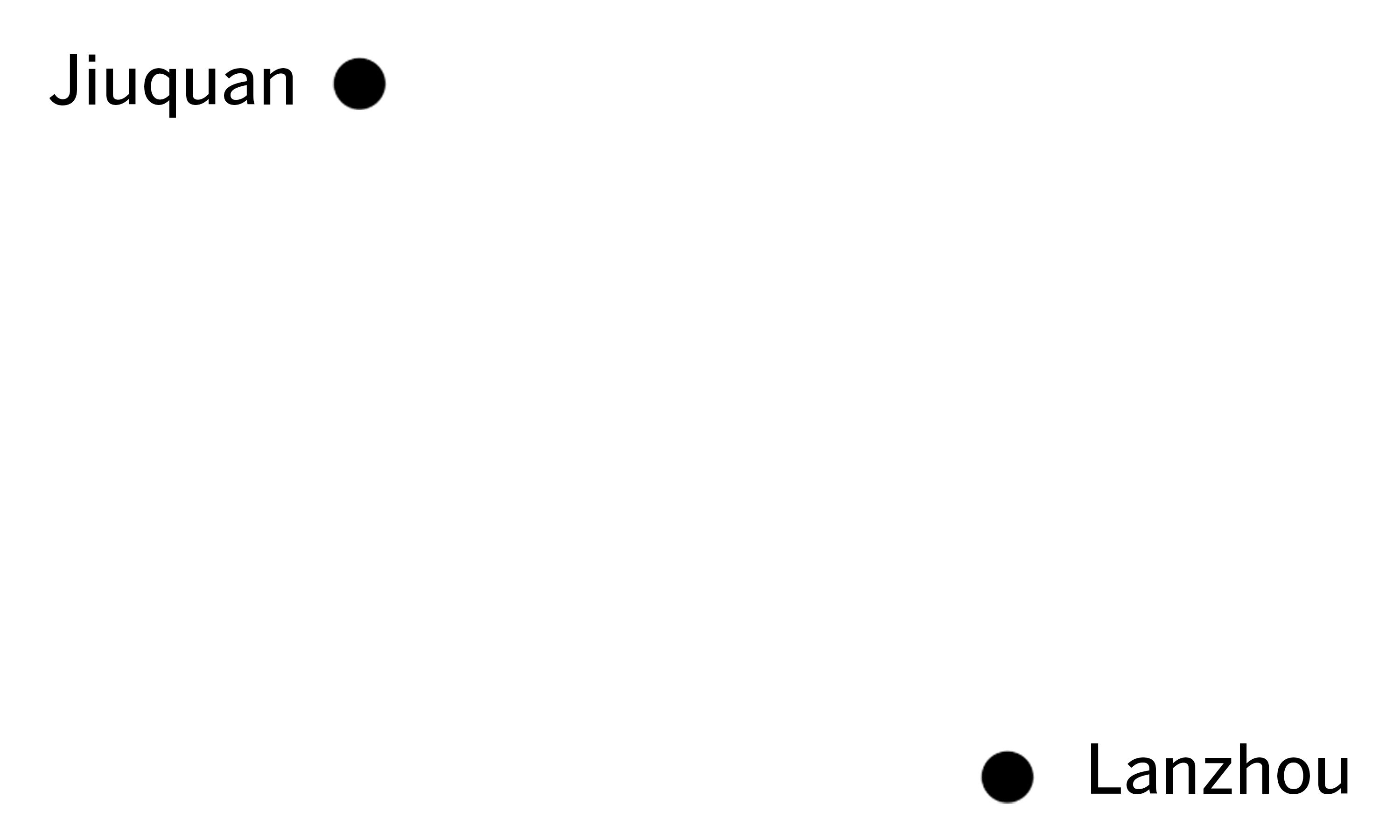
JIUQUAN, Gansu Province
We took another six-hour train the next morning, cutting through the Tibetan plateau in Qinghai province before winding back into Gansu. Bursts of yellow flowers spilled across the fields as we sped past. Jagged mountains reached into an azure sky.
The train televisions played videos of rockets blasting off from a desert outpost in far western Gansu. This was Jiuquan, a major satellite launch site and our train’s destination. In June, China launched three astronauts from here to work on its first long-term space station. It was a place that symbolized the nation’s technological prowess and superpower future.
But we went there in search of its past.
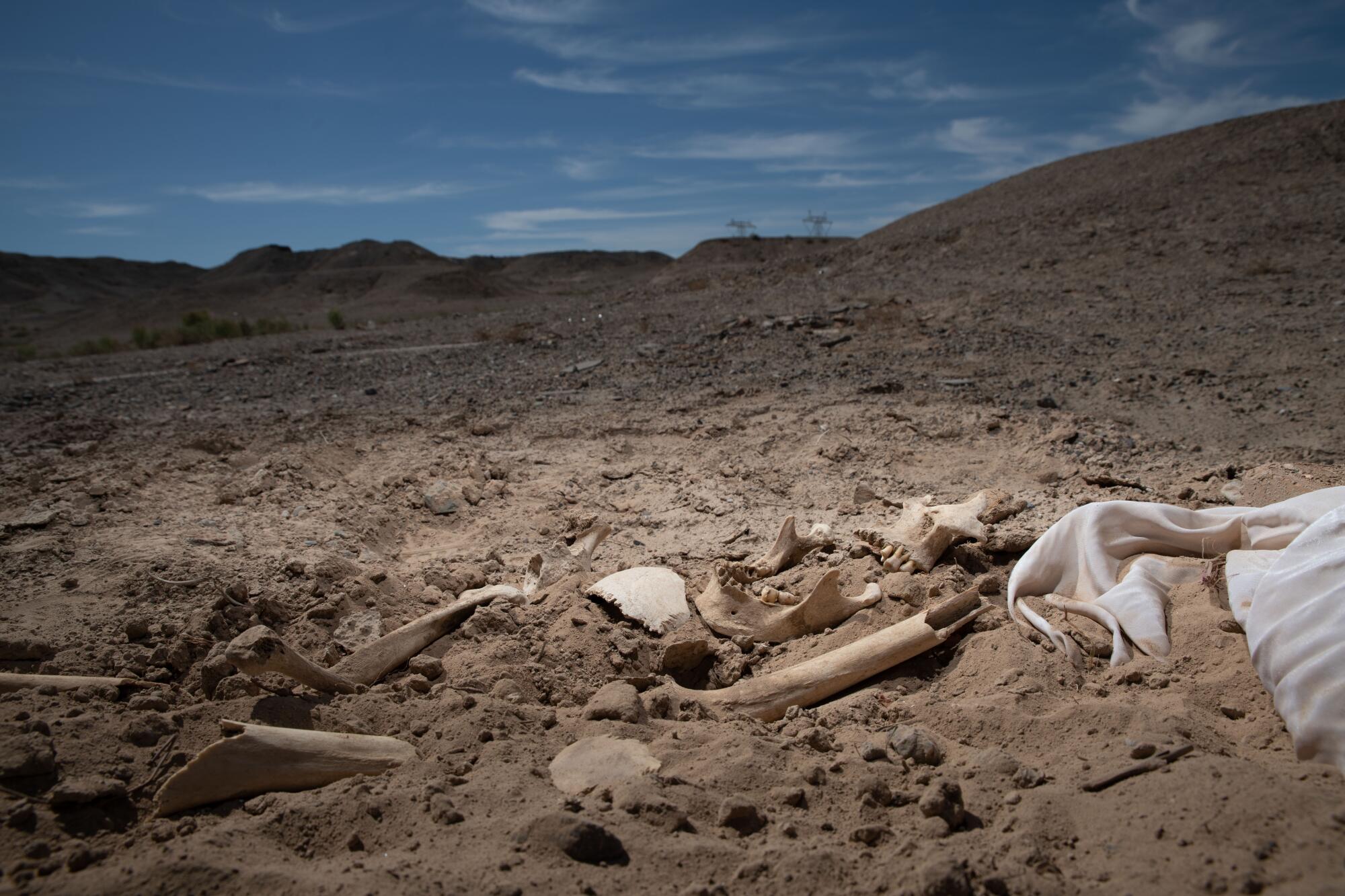
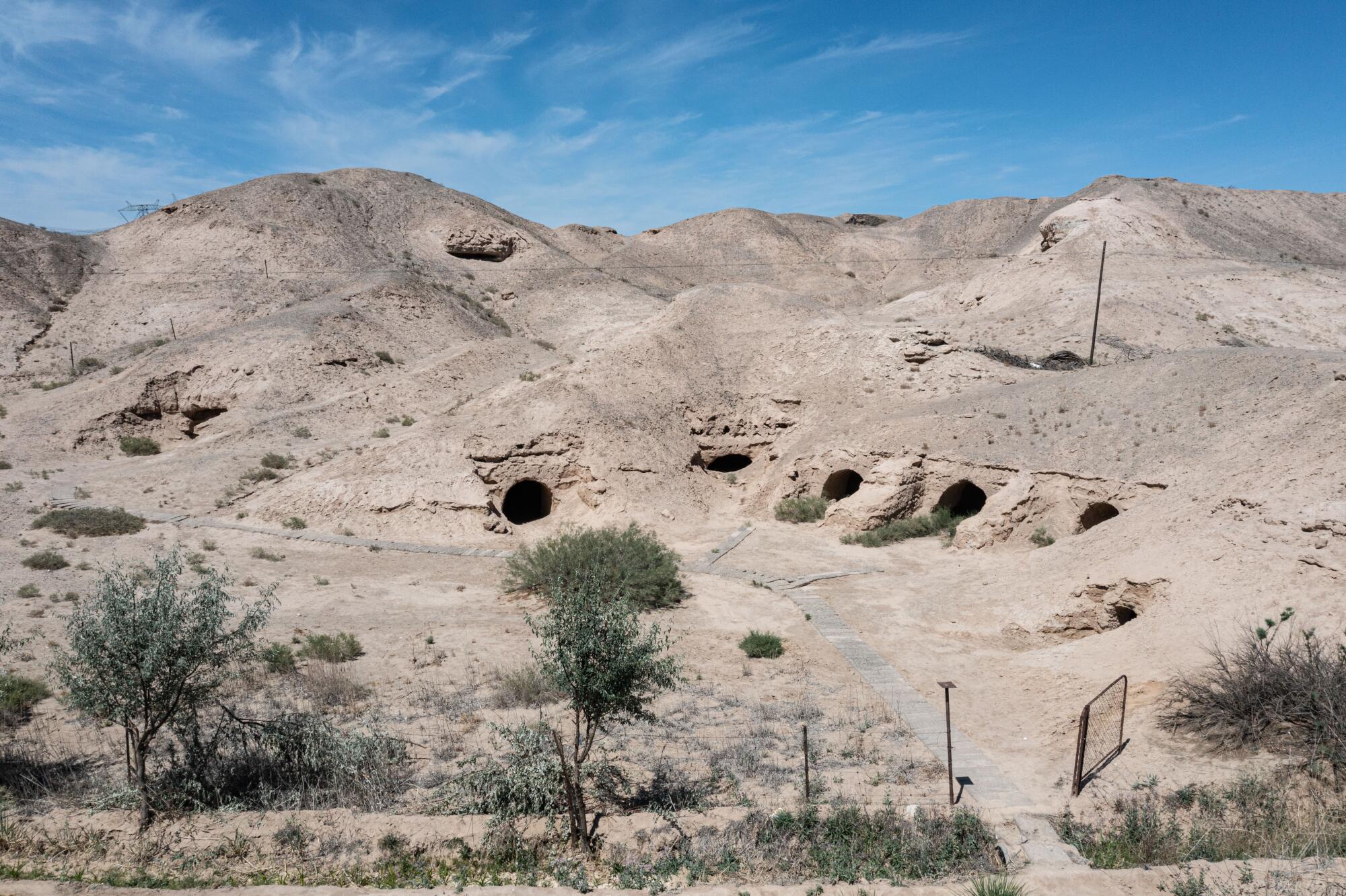
On the outskirts of Jiuquan, beyond fields of corn and wheat, lies the small village of Jiabiangou. In the late 1950s, this was a labor camp. Prisoners were sent here for “reeducation” after being labeled “rightists,” ideological traitors to the party. They were intellectuals, former officials, and ordinary people.
Some had criticized party bureaucracy, corruption or other flaws during the Hundred Flowers Campaign of 1956-57, when Mao called for widespread intellectual debate and expression — “Let a hundred flowers bloom,” he said — in the spirit of constructive self-improvement. After a year, Mao reversed course and launched a massive purge called the Anti-Rightist Campaign.
The camp in Jiabiangou was originally built to house 40 or 50 inmates. But it received 3,000 prisoners, who were forced to dig irrigation ditches and farm in the desert during a famine. Most starved to death. Those who survived did so by stealing or eating human organs, flesh, feces and vomit. The lucky ones made harrowing escapes.
On the train to Jiabiangou, I read “Woman from Shanghai,” a collection of lightly fictionalized camp survivor testimonies written by Yang Xianhui. They were horror stories reminiscent of tales told by survivors of Soviet gulags — the model for China’s labor camp system. But few know of their history in China, where Yang’s books and several Chinese filmmakers’ documentaries about Jiabiangou have been censored.
“Those were bitter times. Man-eating-man times,” said an elderly woman sitting outside her home in Jiabiangou village. She had moved here only in the 1990s to work on a farm, but heard from older villagers about the rightist camp that was once here and brought occasional visitors wanting to pay homage to the dead. She led us to the old camp dormitories, now shuttered and decrepit, and a cluster of caves in the hills of yellow sand behind them.
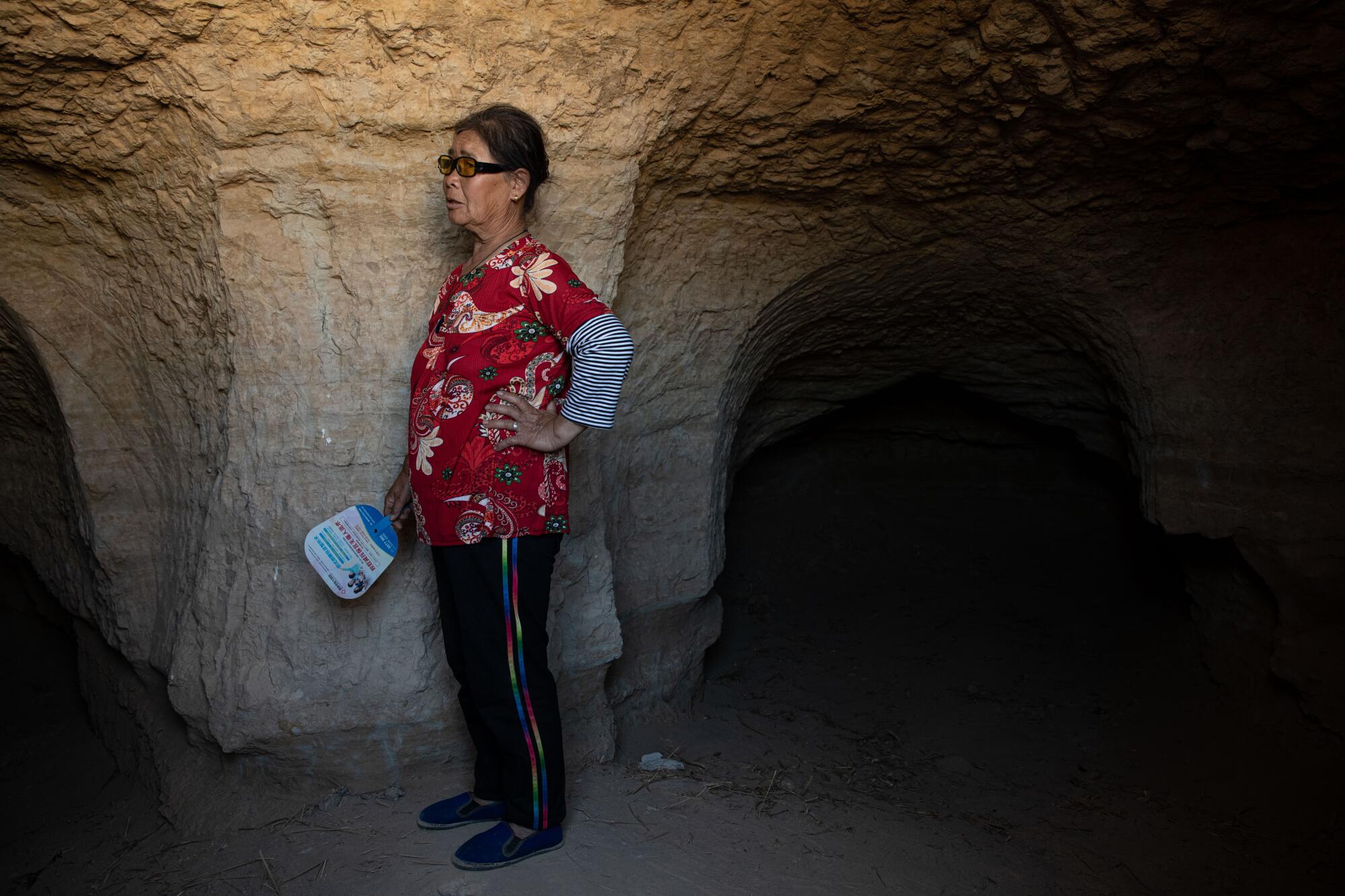
I recognized these caves from Yang’s stories. Many rightists had spent their last days lying inside, staring at the sky before they died. The woman from Shanghai in his book title was a wife who’d spent days here, begging to see her dead husband. His fellow rightists resisted. They didn’t want her to see missing chunks from his buttocks and thighs that others had carved out to eat.
The local woman led us from the caves to a spot in the nearby desert where thin wire fencing circled a patch of sand. This was the “cemetery” where older villagers had dumped cartloads of human bones during the Cultural Revolution at the military’s command, she said. A memorial was erected here in 2013, and the bones were wrapped in white silk and reburied. Within weeks, local authorities destroyed the memorial and reportedly scattered the bones.
The site now stood empty in a blaze of sun. A gust of wind swept across the dunes. “Nothing to see here,” the woman said.
As we were about to leave, we noticed a bundle of white cloth peeking out of the sand. Inside lay a human jaw, with several teeth still attached. Other skeleton parts lay jumbled beneath it: a forearm, parts of the skull, an intact pelvis.
We buried the skeleton again before we left.
The party never fully acknowledged the errors of Jiabiangou. Labor camps were officially abolished in China in 2013, but extrajudicial detention and forced labor in China’s prisons remain common today. Under Xi, the party’s distrust of intellectuals, purges of “two-faced people,” endless search for internal enemies and emphasis on reshaping people’s thoughts have resurged.
The sun set on that desert as we drove away. They shot rockets into space from here, I marveled. Nameless bones lay buried in the sand.
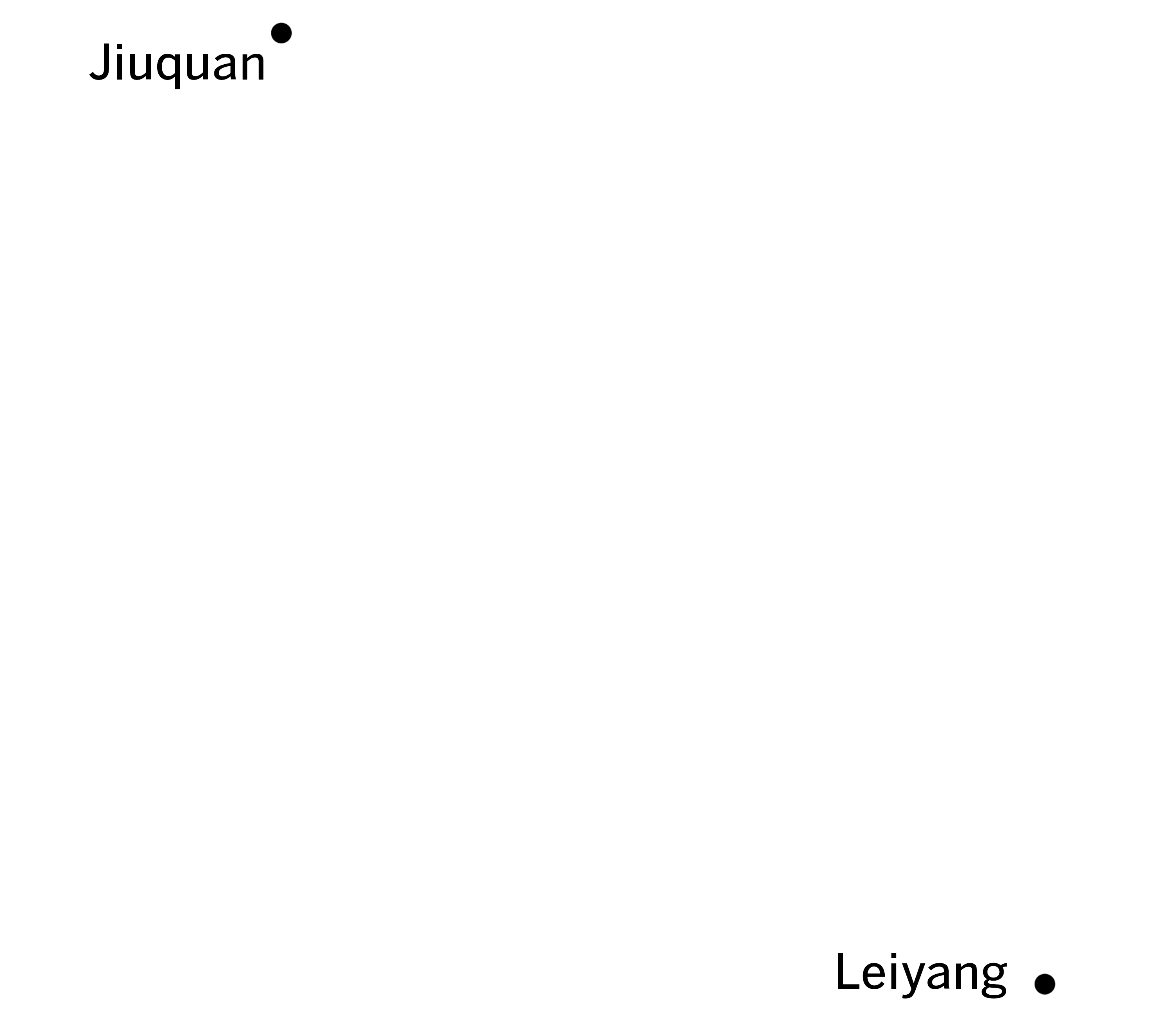
LEIYANG, Hunan Province
Kuang Shunlan lived in a world of constant coughs. She heard them through the walls, coming from her husband, her brother-in-law, from the neighbors in every home in this village.
Worse than the coughs, though, was the silence when they stopped.
We had traveled south from Gansu to Hunan, then headed into the lush green hills of rural Leiyang County, where Kuang lived in one of several villages filled with dying workers. Almost every family here had a member who had gone to work in Guangdong province in the 1980s and 1990s. China was in its reform era then. The party had embraced capitalism, trading class struggle for a new maxim: “To Get Rich Is Glorious.”
Money was flooding into the country, turning southern China into the “factory floor of the world.” Most of the migrants from Leiyang worked on construction sites in Shenzhen, drilling holes about 100 to 130 feet deep that would then be filled with concrete to strengthen building foundations. Dust filled their lungs and coated everything but their eyeballs in white powder.
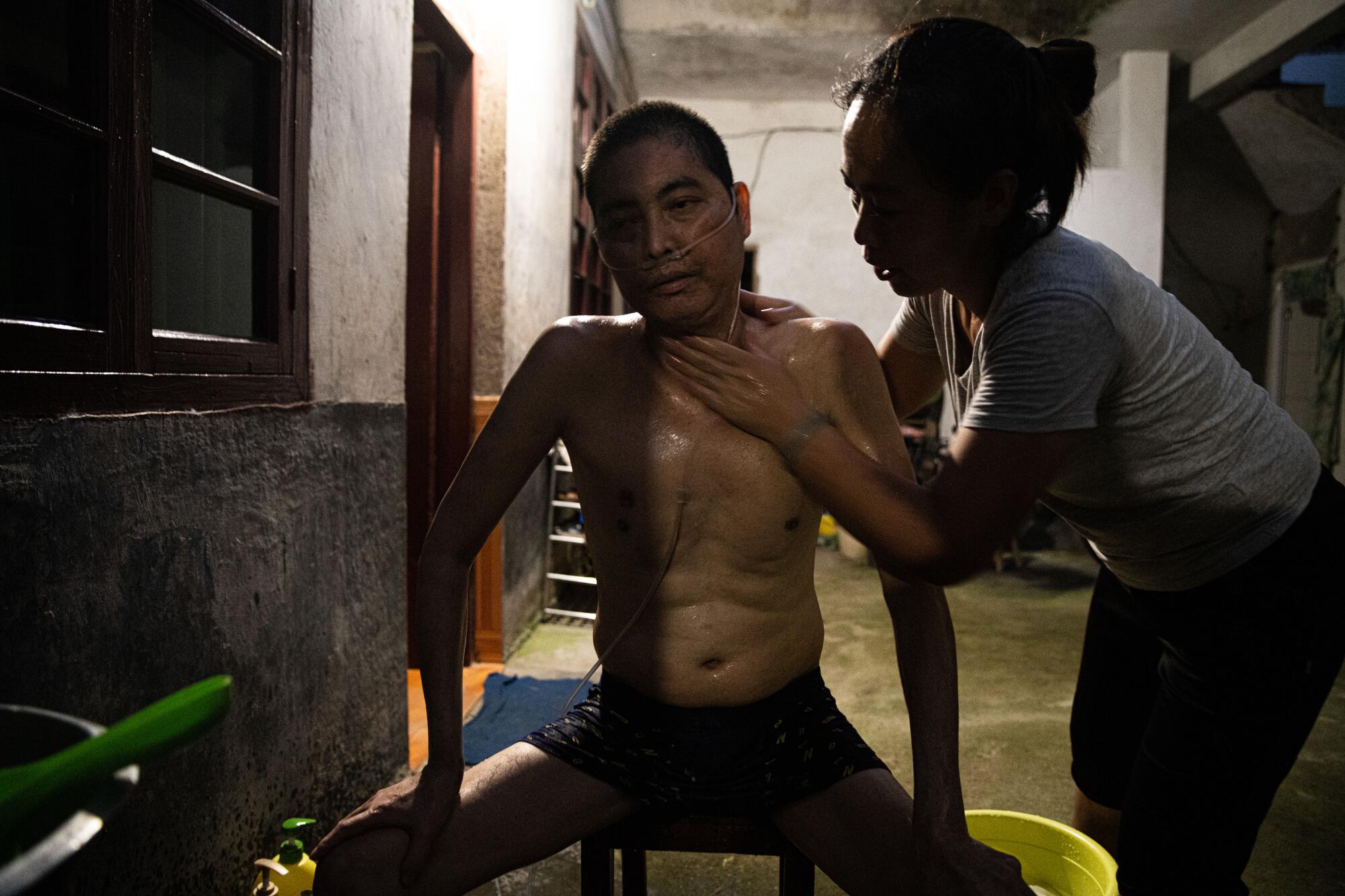
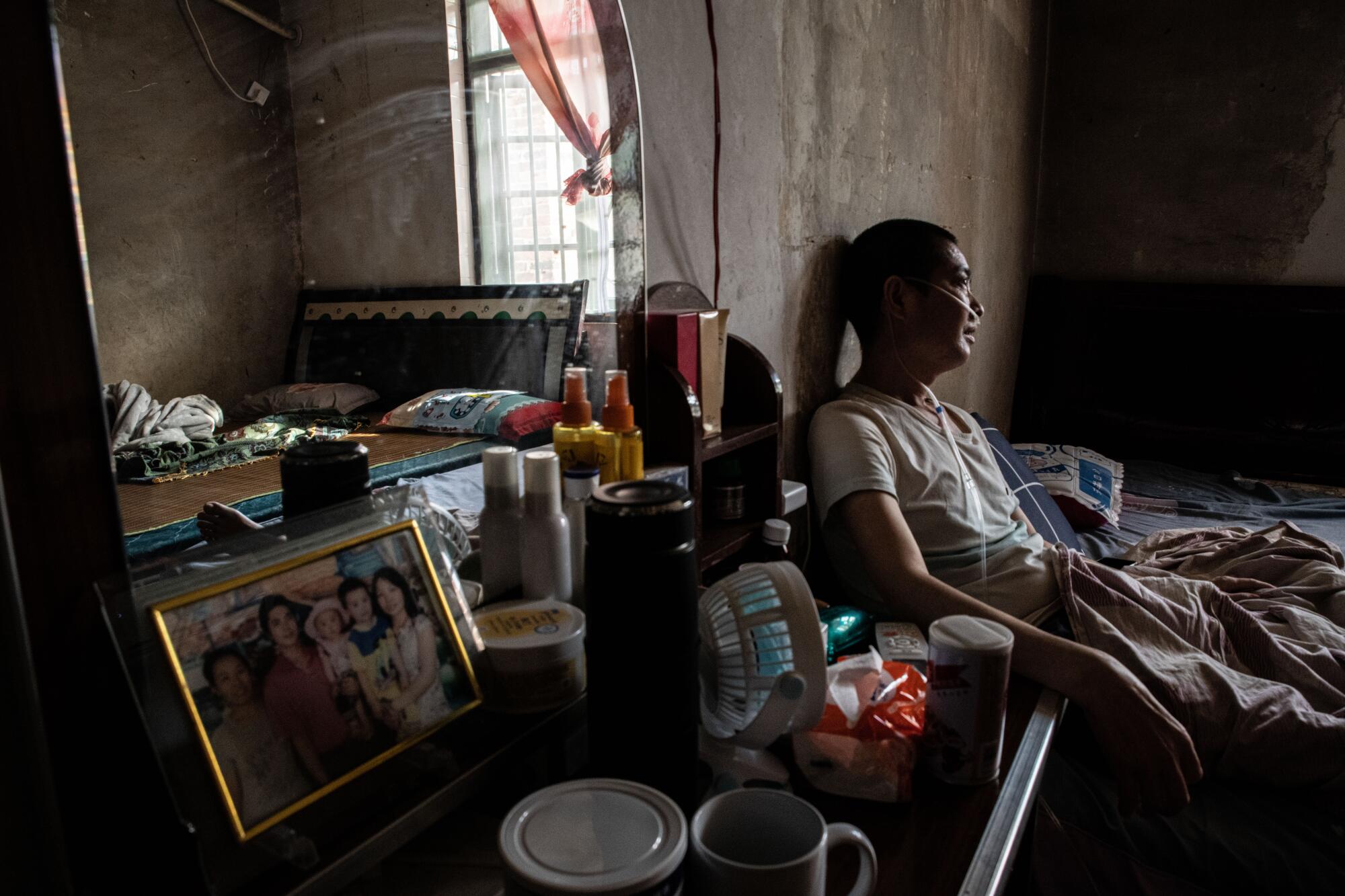
The men discovered years later they had silicosis, an occupational lung disease. They hacked and spat and struggled to catch their breath. They needed oxygen machines, expensive medicine, intubation at hospitals — none of which they could afford.
One by one, they began to die.
Kuang, 40, was married to one of those men. Her husband, Xu Shuming, 44, sat crumpled on the edge of their bed, oxygen tubes stuck in his nose. He wheezed as he spoke, spitting periodically in a can. His limbs were shrunken and skeletal, his face and belly bloated from steroid injections.
Xu was only 18 when he followed fellow villagers to Shenzhen in 1996, riding a windowless cargo train. When the doors opened he glimpsed roads wider than any he had ever seen, with flower-filled hedges in the middle. “They were beautiful,” he remembered.
He had worked on many of Shenzhen’s most famous skyscrapers: SEG Plaza, Shun Hing Square, Pingan International Financial Center. His older brother had come a few years before him. They could make $300 to $500 a month, much more than the factories paid. They had no work contracts and little protective gear.
In 2009, Xu’s older brother died of silicosis. He was 35 years old.
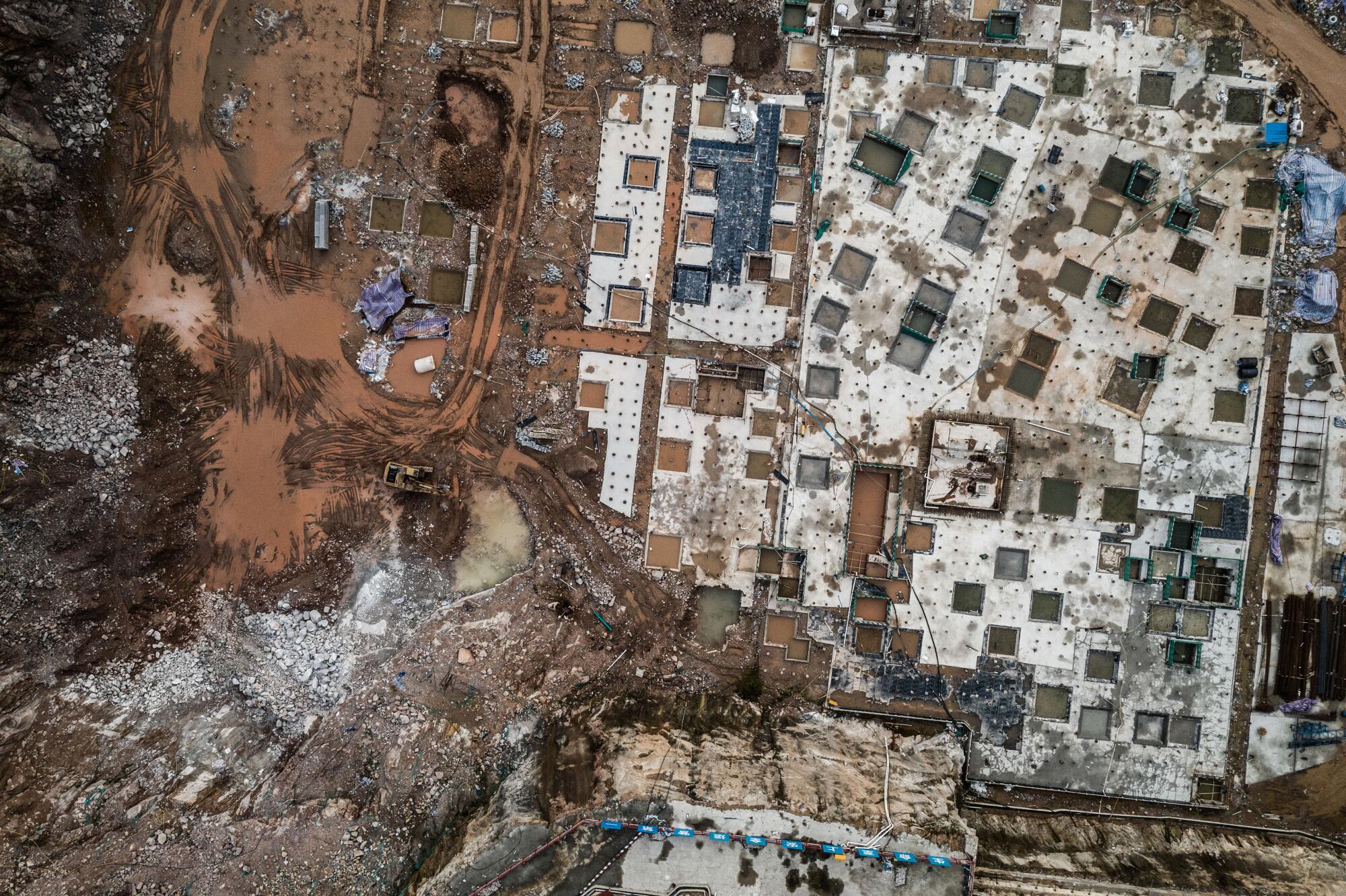
Xu was diagnosed with silicosis that same year. He’d pulled out of the drilling work by then. But he and Kuang had to make ends meet.
He tried driving a coal tricycle in Beijing, but was arrested for not having a residence permit. He spent six months at an electronics factory in Shanghai, injecting chemical fluids into batteries, but left because the chemicals were injuring workers’ eyes. Kuang worked at a cellphone factory in Shenzhen, often until 2 or 3 a.m. to earn overtime pay to cover Xu’s medical bills.
The couple’s struggles were common among China’s migrants. The rural workers who built China’s prosperous cities do not have access to the same social services as urban residents. Their hukou, or household registration permit, tied them to their rural origins. They languished at the bottom of society even as their labor propelled China’s economic rise.
China is now one of the most unequal countries. During the pandemic, China surpassed even the United States in creation of billionaires. It is the first country with more than 1,000 billionaires. Meanwhile, 600 million Chinese are barely surviving on roughly $140 a month, Premier Li Keqiang said last year.
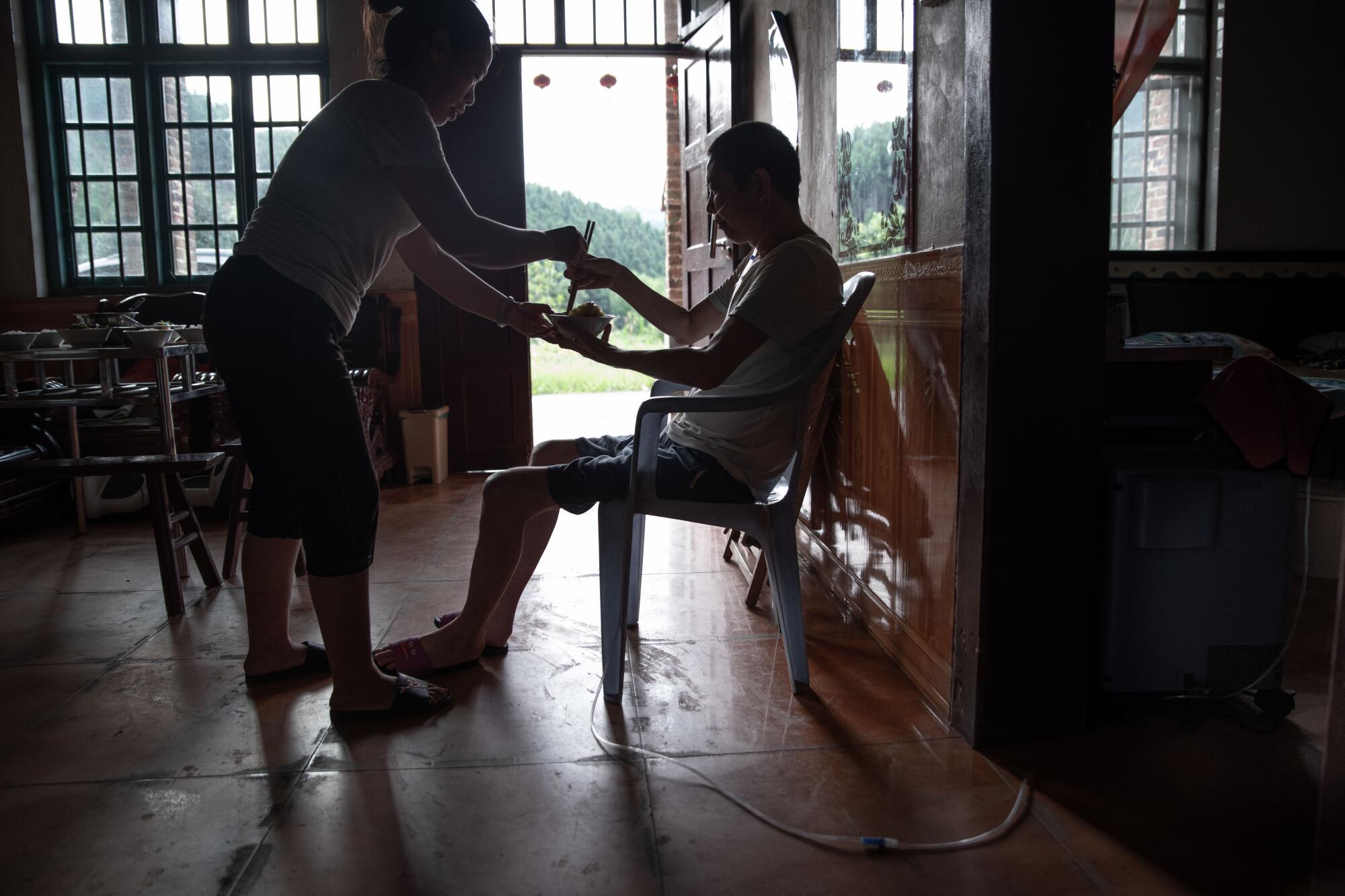
The party is addressing inequality. Xi has spoken in recent months of “common prosperity,” rather than the previous adage of “letting some get rich first.” He has launched poverty alleviation and anticorruption campaigns and is now cracking down on the tech, education and entertainment sectors, apparently because they privilege the elite.
Those campaigns may bring change. But for many it will be too late.
In 2018, Xu joined other silicosis-stricken workers to seek compensation for their work injuries. Hundreds of workers staged a sit-in before the Shenzhen city government. Police met them with beatings and pepper spray. Only when several dozen workers ran to the top of a building and threatened to kill themselves did the authorities agree to negotiate.
As the economy slows, China’s crackdown on the rich and famous may be an attempt to distract from ordinary families’ anxiety over their children’s future.
In the end, they agreed to provide medical care and roughly $150 of living expenses each month. But they refused to certify the workers’ silicosis as a work injury, which would entitle the latter to more financial support. Several labor activists who’d supported the workers and documented their protests were arrested for “picking quarrels and provoking trouble,” and remain in prison today.
Xu has come close to death. The most recent occasion was on his daughter’s birthday in April. He had been struggling to breathe, eat or sleep in the hospital, and asked Kuang to bring their children to him one final time. He survived.
“I didn’t want to be saved anymore,” Xu told me when Kuang stepped outside. “Every day I live is just another day of burdening my family.”
At night Xu sat outside, practicing breathing exercises. His wife washed the dishes, slapping occasionally at mosquitoes with a rag. Kuang was afraid. So many sick workers in their village had died. Some committed suicide, electrocuting or stabbing themselves while their families were away. Others just slowly coughed to death.
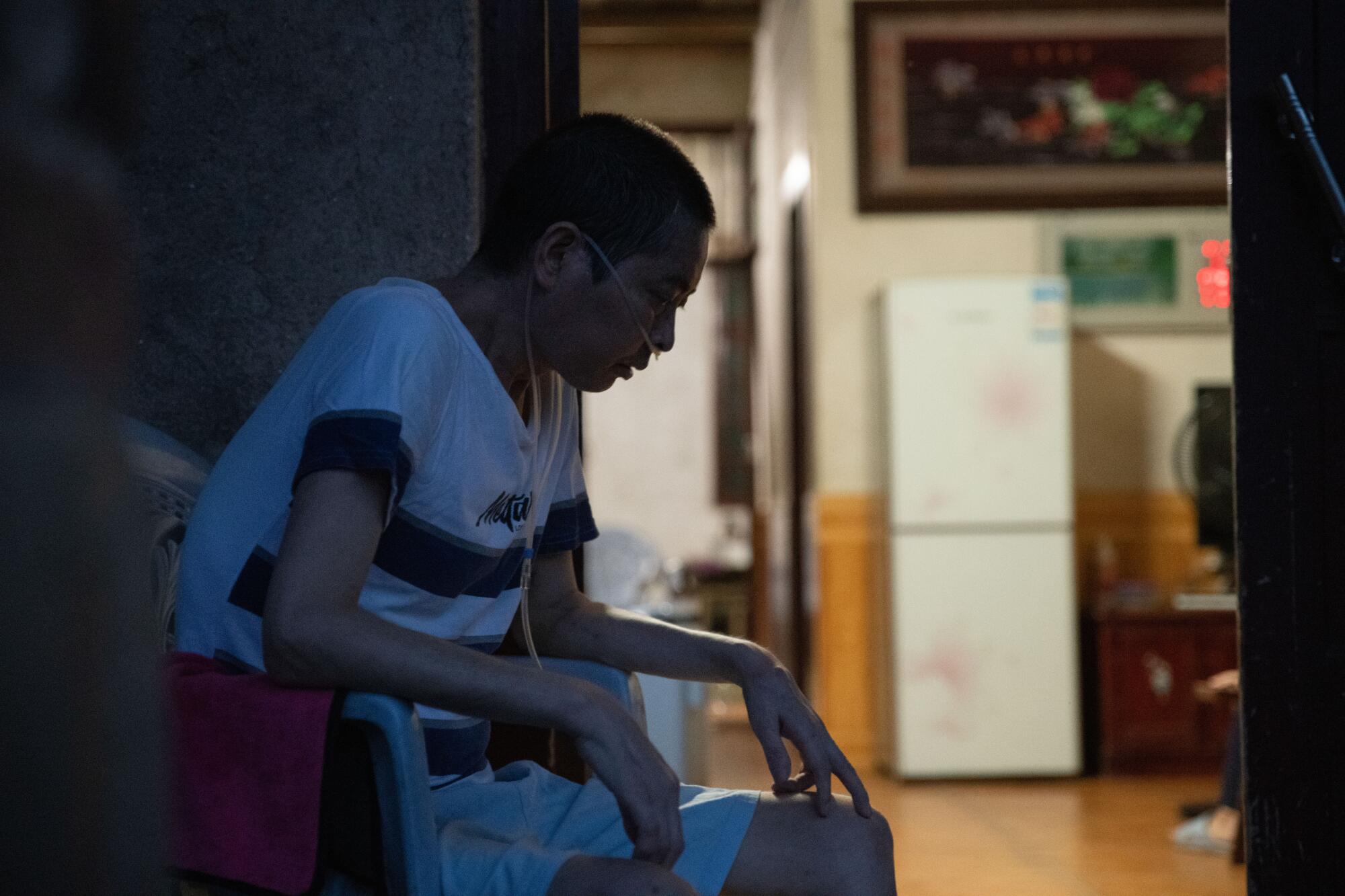
Those lucky enough to be free from medical bills were moving out of the village. They found better jobs and bought bigger houses in towns where their kids could go to school. The village got quieter, emptier. Some nights it seemed they were the only ones left.
“Everyone says society is so good these days,” said Kuang. “Life is getting better and better. Who doesn’t want to keep living?”
Her husband sat alone outside the front door. His silhouette heaved with every breath.
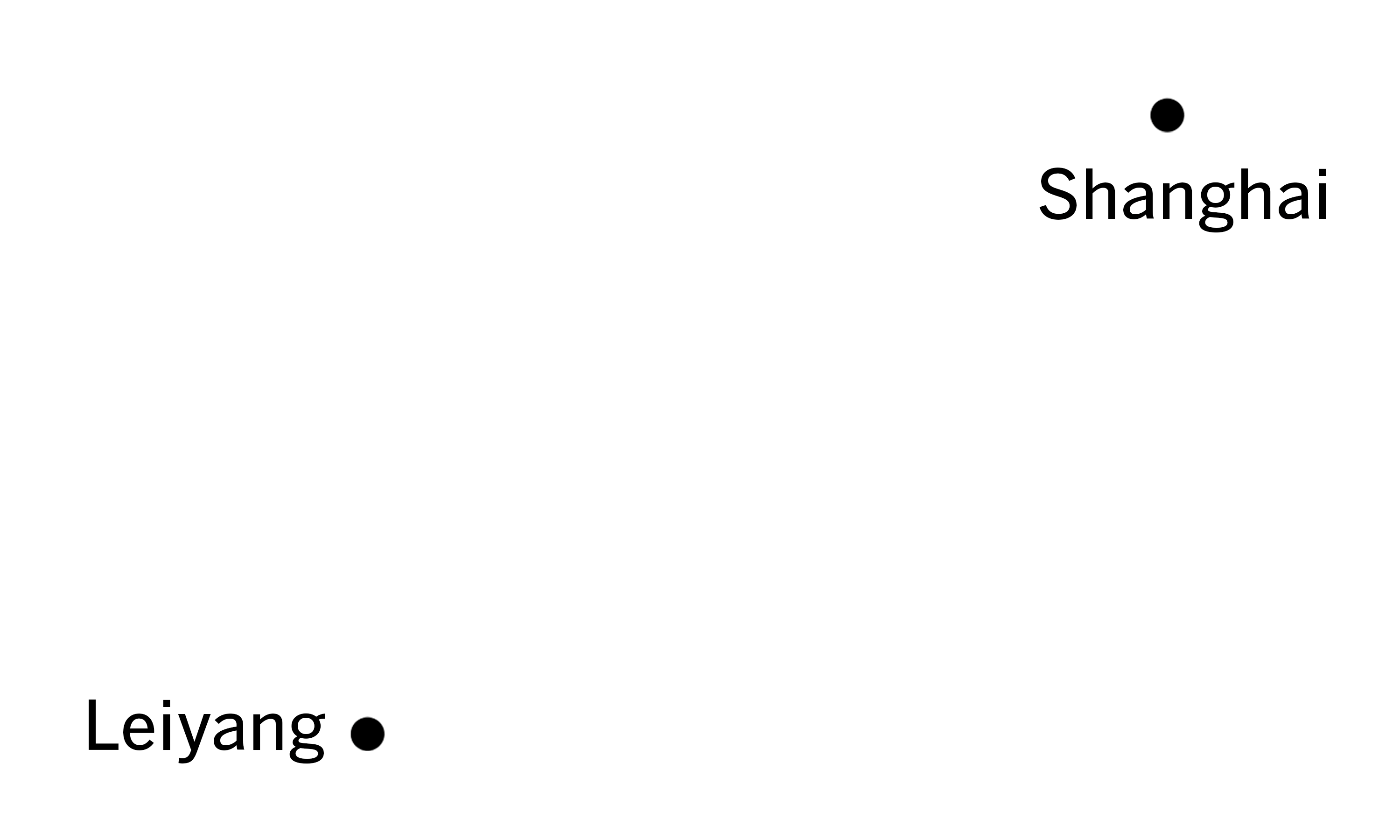
SHANGHAI
This metropolis was jarring after the Hunan village. We’d arrived by plane on a Saturday night and come straight to Xintiandi, a high-end shopping area buzzing with foreigners and wealthy Chinese. Women in high heels clicked out of a mall and pouted for selfies in front of an ad for Valentino makeup. One of the bars blasted a “Despacito” remix.
One hundred years ago, revolutionaries supported by the Soviet Comintern had gathered here in secret. They read books and dreamed of uniting the workers of the world, throwing off the chains of imperialism and establishing a classless society.
Those old slogans have been recast to capture a new China Dream. More nationalist than communist, it envisions a rich and strong China, buoyant with consumer power and confident about its place in the world. It aims to galvanize the young, not to fight the establishment but to join it, love it, give thanks to it and defend it.
Shanghai, a city once split into foreign concessions and derided by Mao-era revolutionaries for its bourgeois glamour, is now a symbol of the party’s ambitions. It epitomizes a China of the future: tech superpower, business hub and consumer paradise, a smooth blend of material happiness and political devotion.
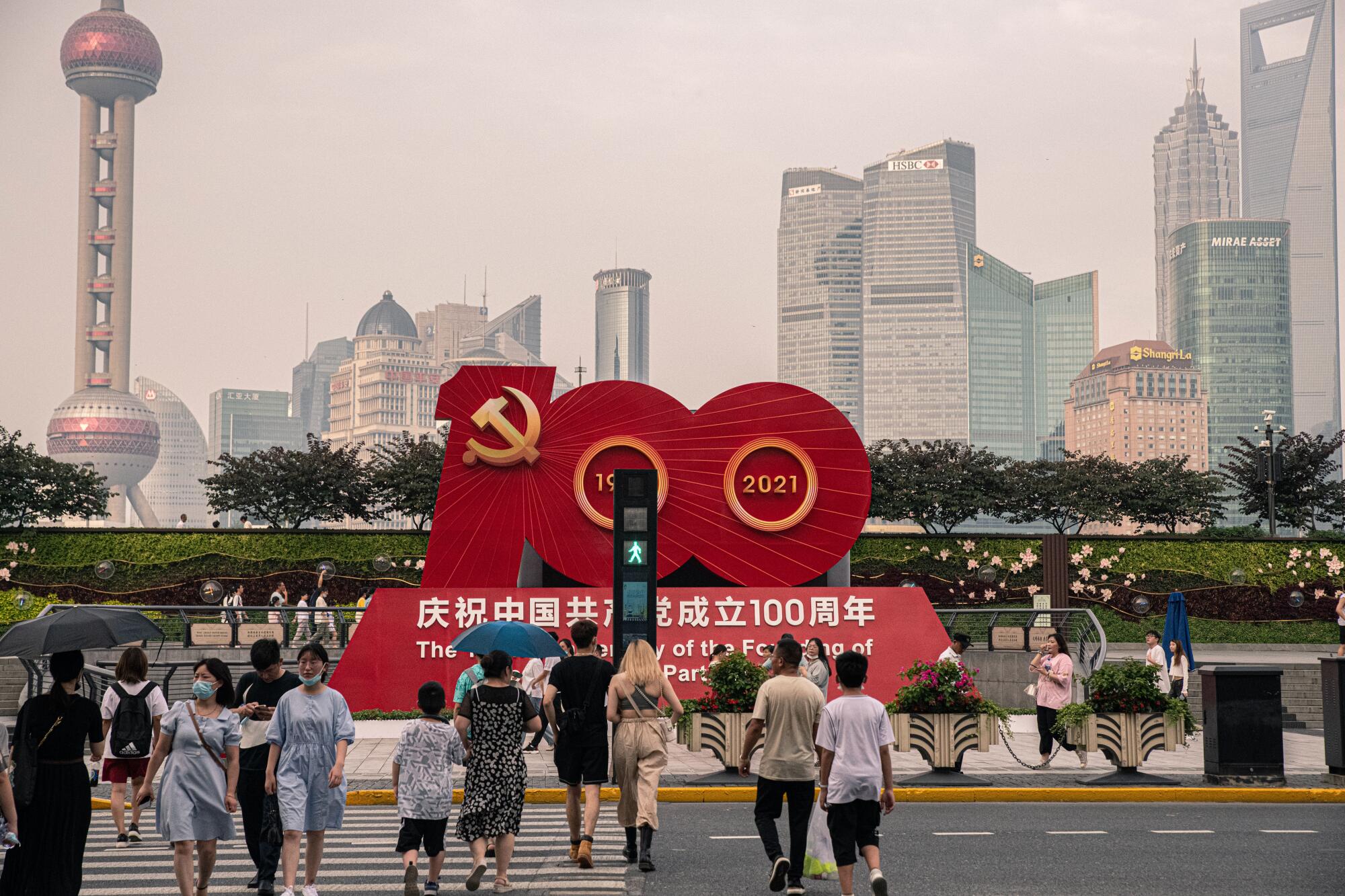
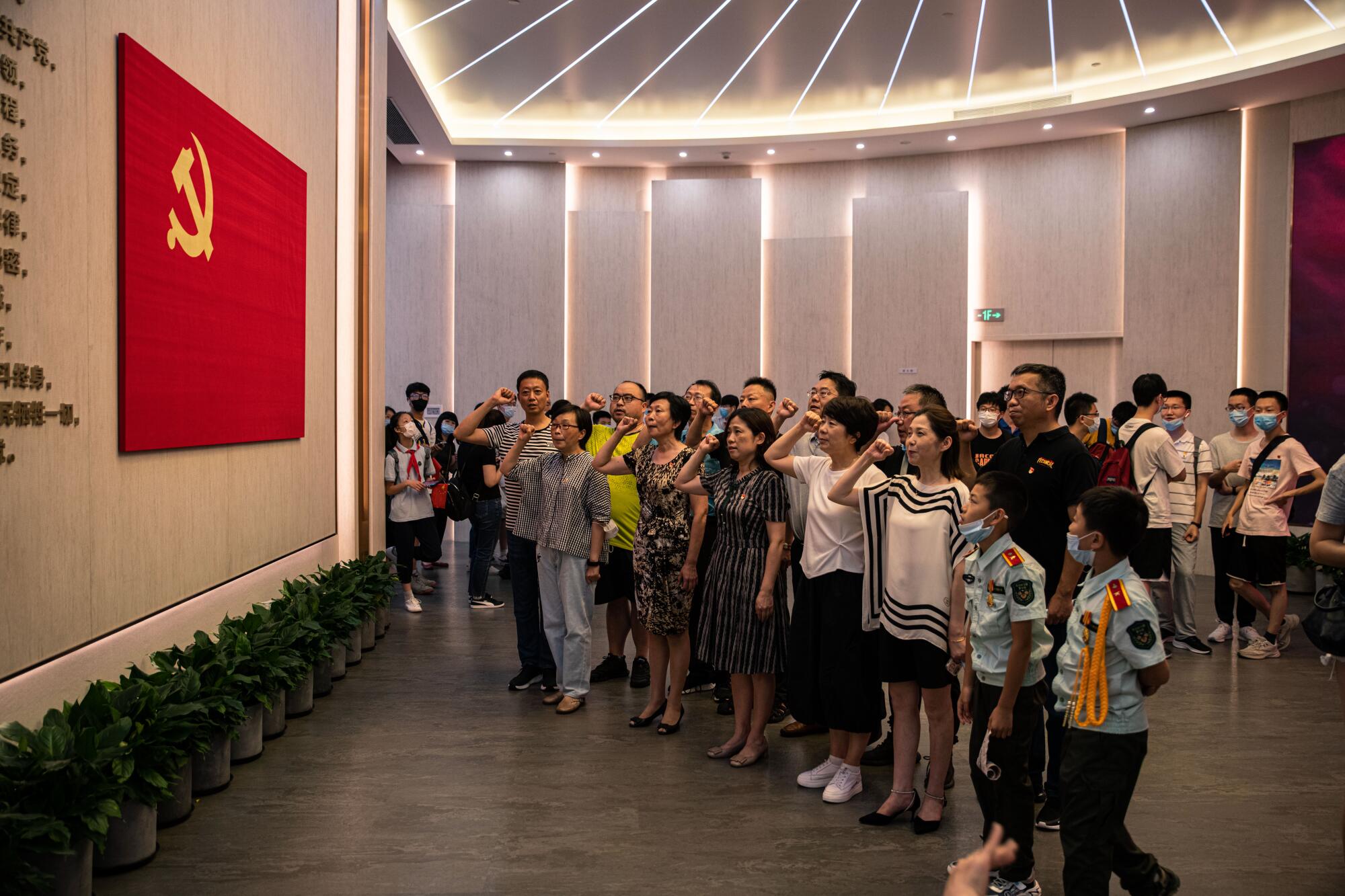
We’d come to see the new museum that opened here to commemorate the party’s founding. Thousands of visitors were lined up by early the next morning. Many were students doing required summer homework. They wore red scarves, party pins and patriotic T-shirts, their parents cooling their offspring’s sweaty faces with electric fans.
The exhibits told a story of national humiliation, framing the party as China’s savior from a century of imperialist exploitation. “TO FALL BEHIND IS TO GET BEATEN,” large characters proclaimed in Chinese above a video about the “unequal treaties” China signed with foreign powers after the 19th century Opium Wars.
I listened as parents narrated the displays to their children. “See how much the foreigners stole from us? See how bad those people were?” a mother said to a young child. A nearby plaque said the party brought “light and hope to the disaster-ridden people in an old and backward country.”
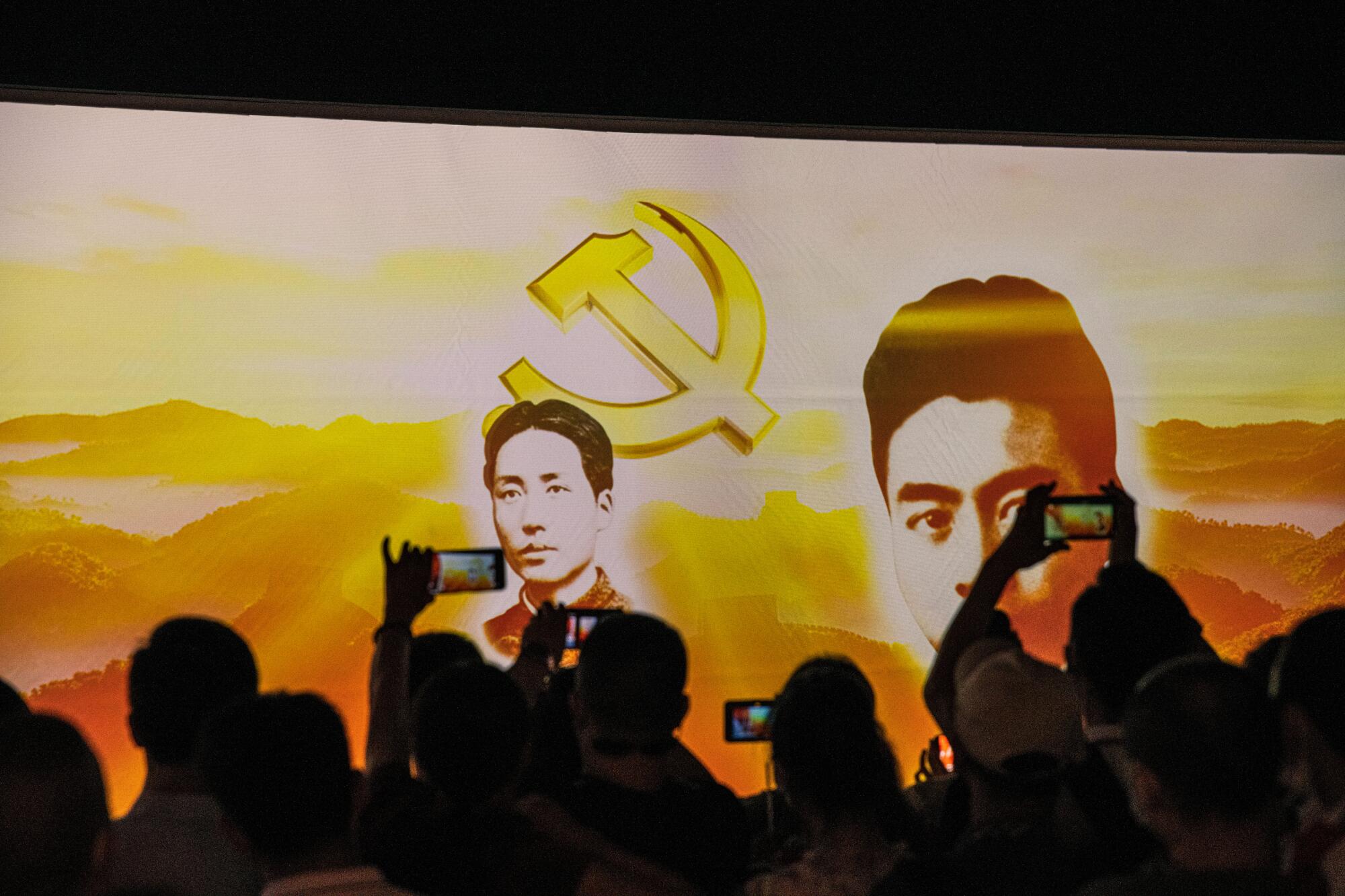
A single wall panel covered all the events of Mao’s rule, with no mention of the millions who died in land reform, famine and the Cultural Revolution. Deng Xiaoping, Jiang Zemin and Hu Jintao, the leaders who followed Mao, got one panel each for their eras. Then came five full walls of Xi Jinping’s “new achievements in the new era.”
In the last room of the exhibit, children scribbled love letters to the party on pink notecards.
“I wish to battle for the party and the nation,” one said.
“Long live the party. I love the motherland. It gives me strength,” said another.
“The eastern dragon dominates the entire world!” said a third.
Others were not so easily impressed.
That same afternoon, I met Alec Yang, 30, a self-identified follower of a trend called tangping, or “lying flat.” The term was coined by a former factory worker who opted out of the rat race and wrote an online post in April titled “Lying Flat Is Justice.”
“People should not be so exhausted, people should pursue a simple life,” the ex-worker wrote. “I choose to lie flat, I am no longer afraid.”
Tangping went viral. It captured the burned-out milieu of China’s urban millennials, spawning avid discussion in online forums about the exhaustion of working “996” hours (9 a.m. to 9 p.m., six days a week) and stress of rising housing prices. Many called themselves jiucai, Chinese chives — easily grown and easily harvested, hapless, tiny parts of a mass human pool to be squeezed for labor, taxes and children.
Yang had quit a design job at Zippo, the lighter company, and refused a job at Alibaba’s headquarters in Hangzhou. He wasn’t “completely flat,” he said, because he’d recently taken a more relaxed job at a cosmetics company that would allow a flexible schedule.
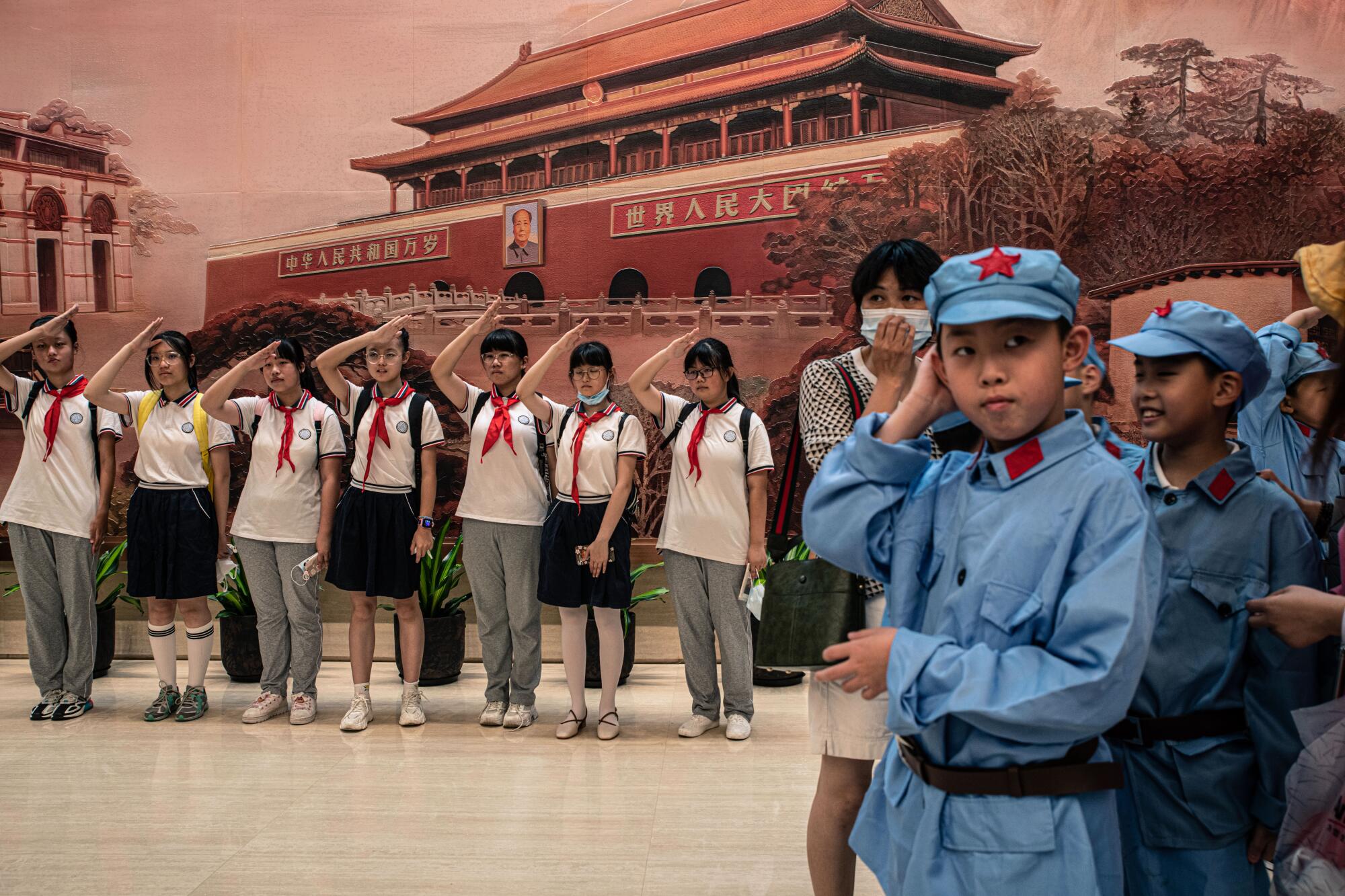
Many of China’s young generation — the ‘ants’ born since the 1990s — have grown suspicious of capitalism and the inequality it spawns.
When I asked Yang about the spirit of Dazhai, the village that was Mao’s touchstone for inspiring the masses, he looked confused. That kind of propaganda was out of touch with young people’s lives, he said: “Whatever the officials say, we are mostly like, umm … OK?”
Yang said he and his friends were more interested in the lifestyle of Keanu Reeves. He pulled out a screenshot of the actor with a quote that he’d found on Reddit.
“I want to enjoy life and not stress myself building my bank account,” the quote said. “We all know that good health is much more important.”
Then he asked me a question. Would readers in L.A. understand the concept of tangping?
Sure, I said. Millennials worldwide could relate to that running-in-place feeling. Plenty of Americans probably wanted to lie flat, too.
Yang seemed satisfied. “Young people worldwide are not so different,” he said. “There’s just too much baggage from older generations.”
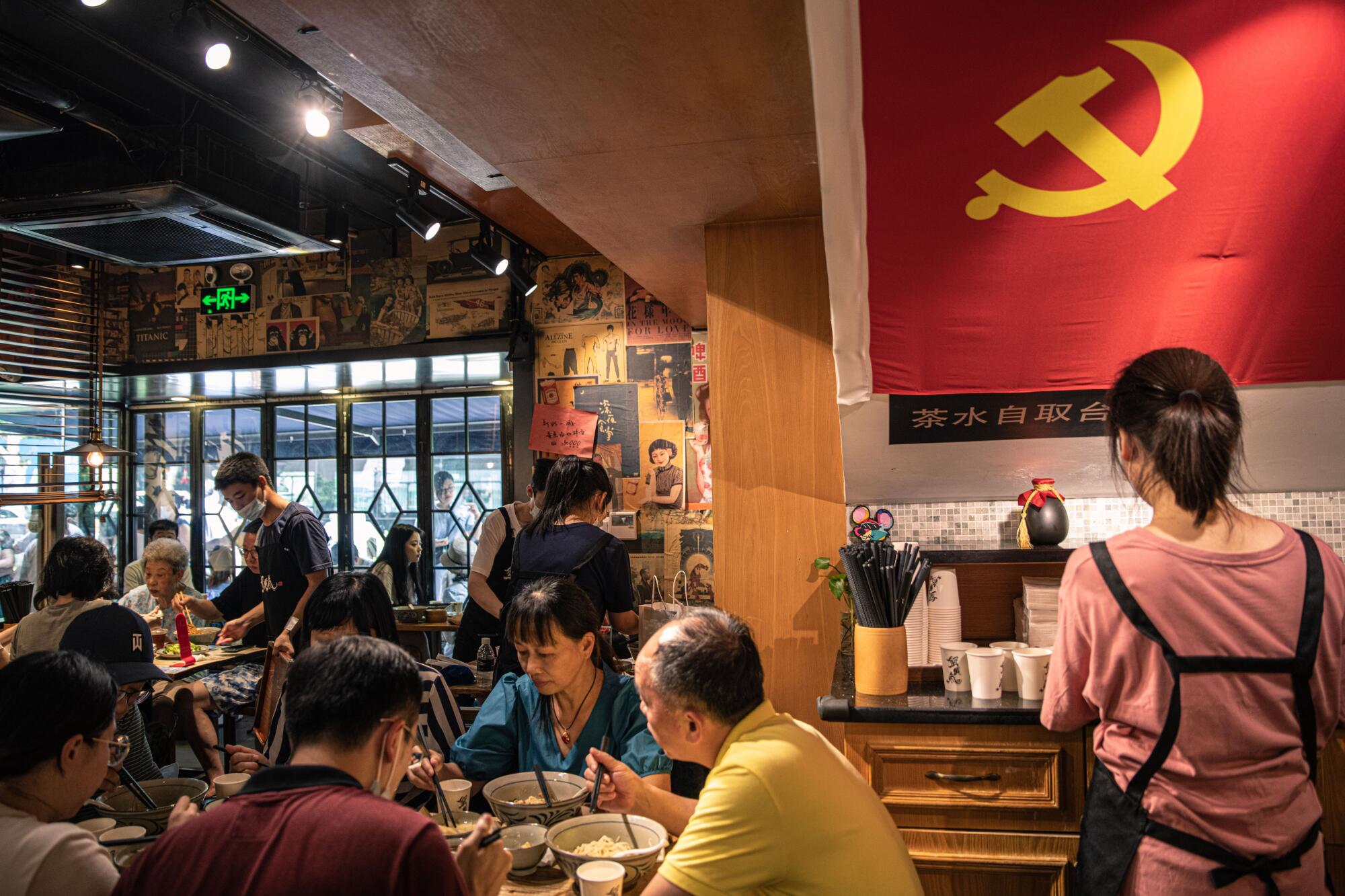
I nodded in agreement, but wondered later: Is that baggage so easily shed?
On the train back to Beijing, I thought of the slogans we’d seen throughout our journey. What made them seem “outdated” to Shanghai youth was also what made them worrying to the Hui. They were Mao-era relics now revived with gusto, signals of a top-down drive to bring the party back to its roots, to purge impurities, reshape society and concentrate control.
So much of China today felt fast-forwarded, speeding toward the future: the rocket launches, the skyscraper cities, the high-speed rail we’d taken all week.
And yet I couldn’t shake the sense, as we pulled back into Beijing’s railway station, that we were traveling into the past.
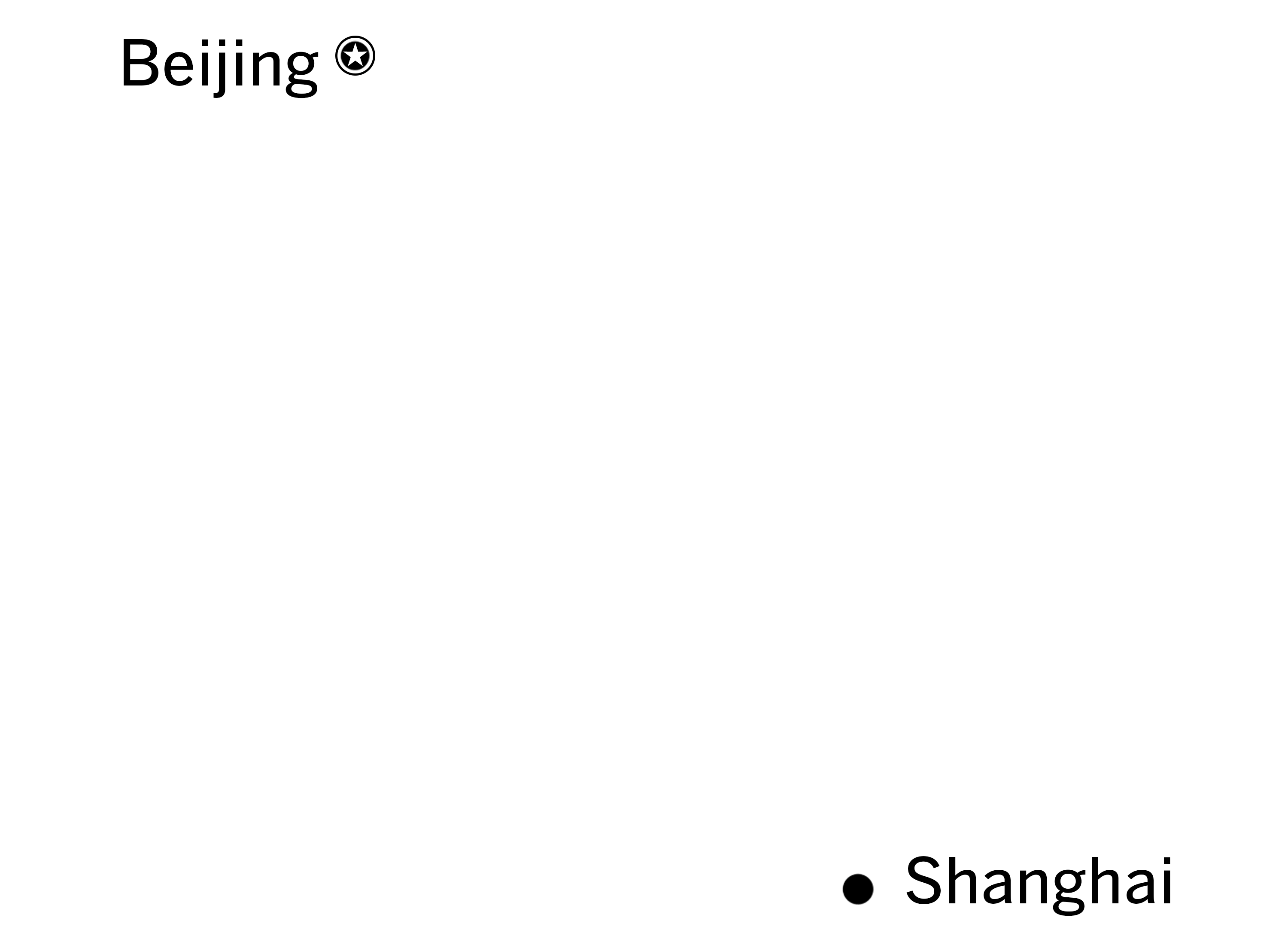
Ziyu Yang of The Times’ Beijing bureau contributed to this report.
More to Read
Sign up for Essential California
The most important California stories and recommendations in your inbox every morning.
You may occasionally receive promotional content from the Los Angeles Times.
